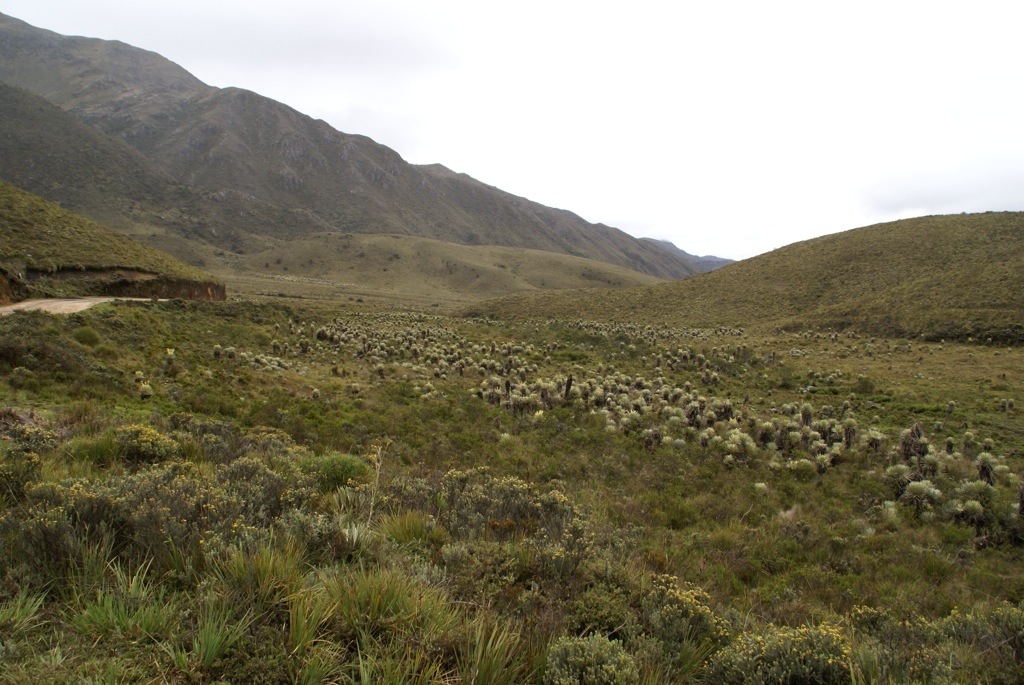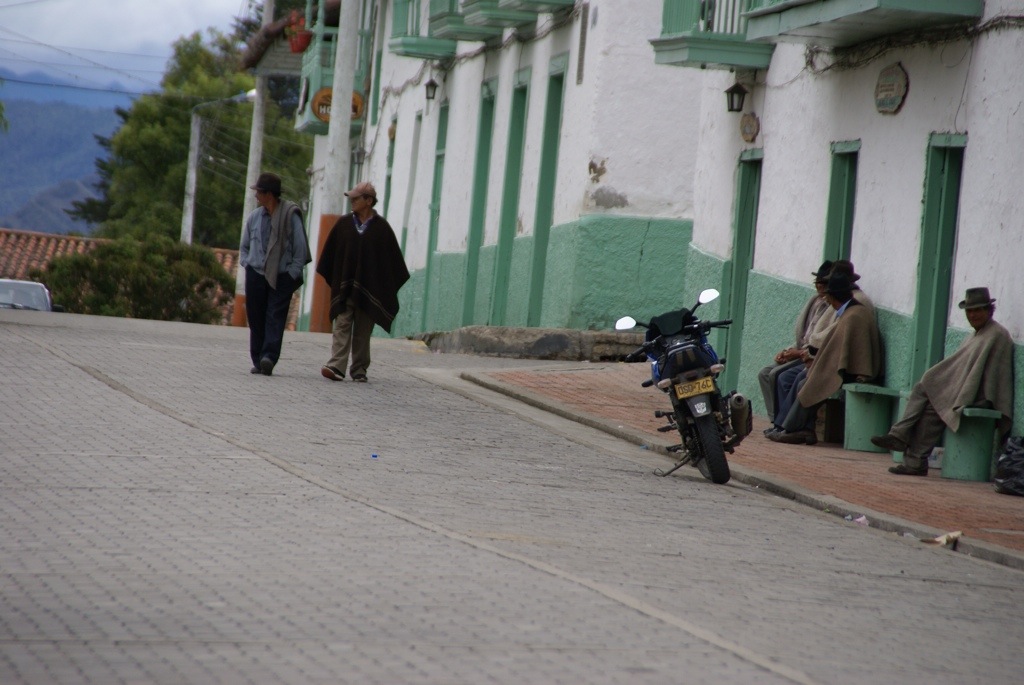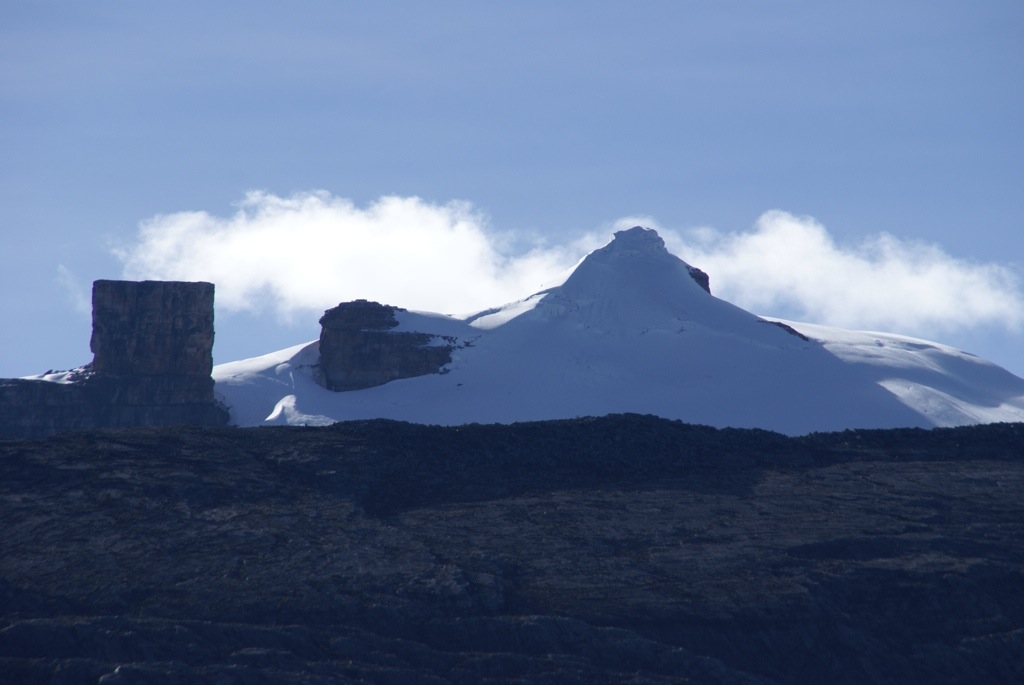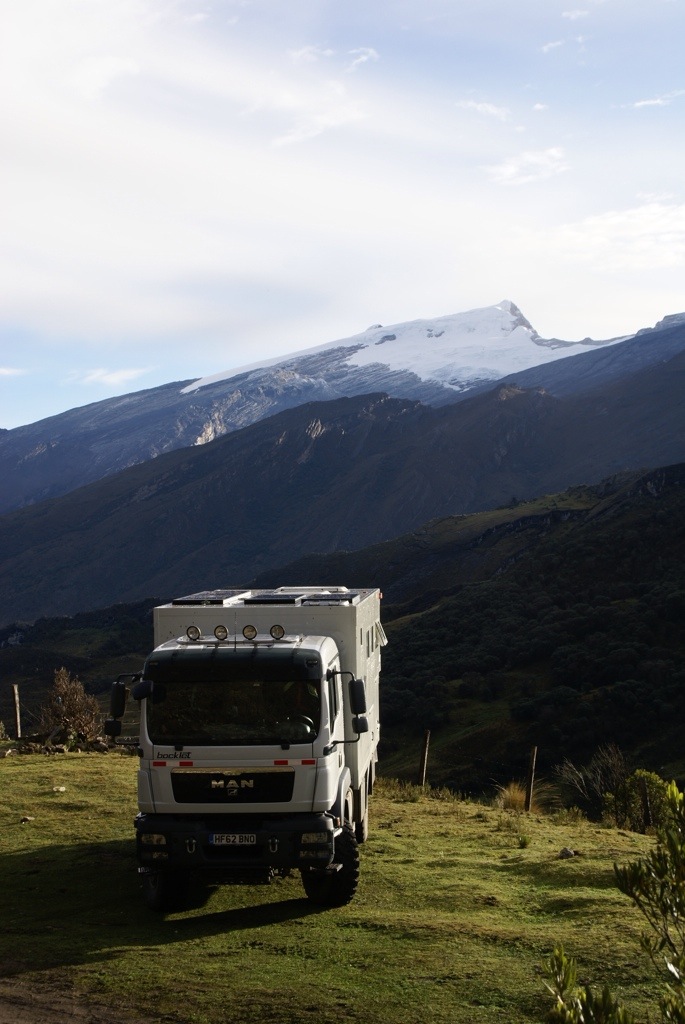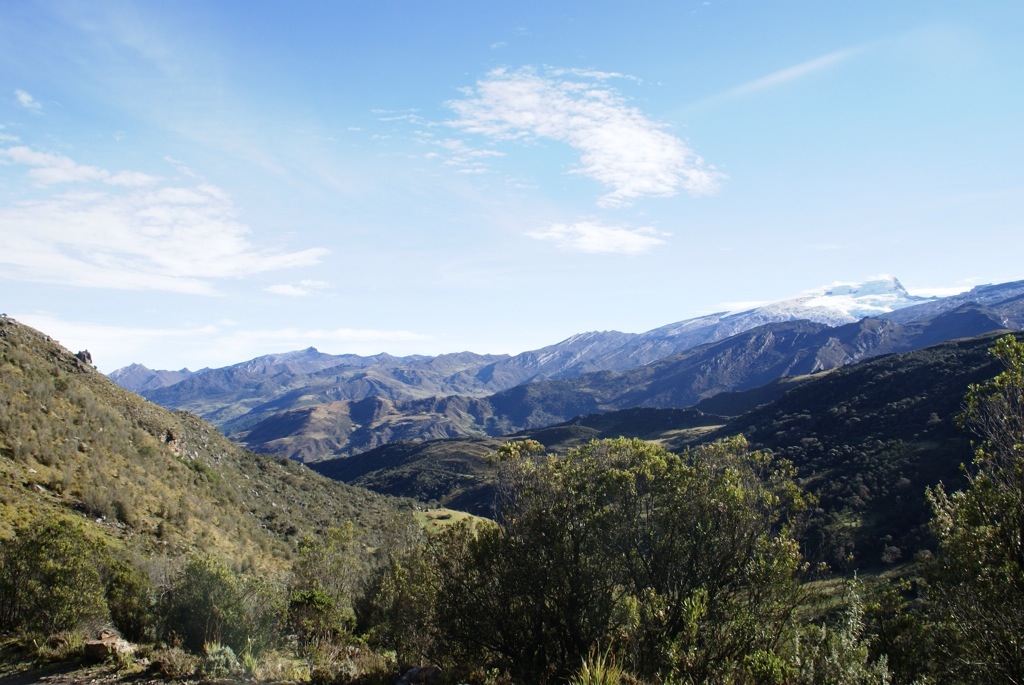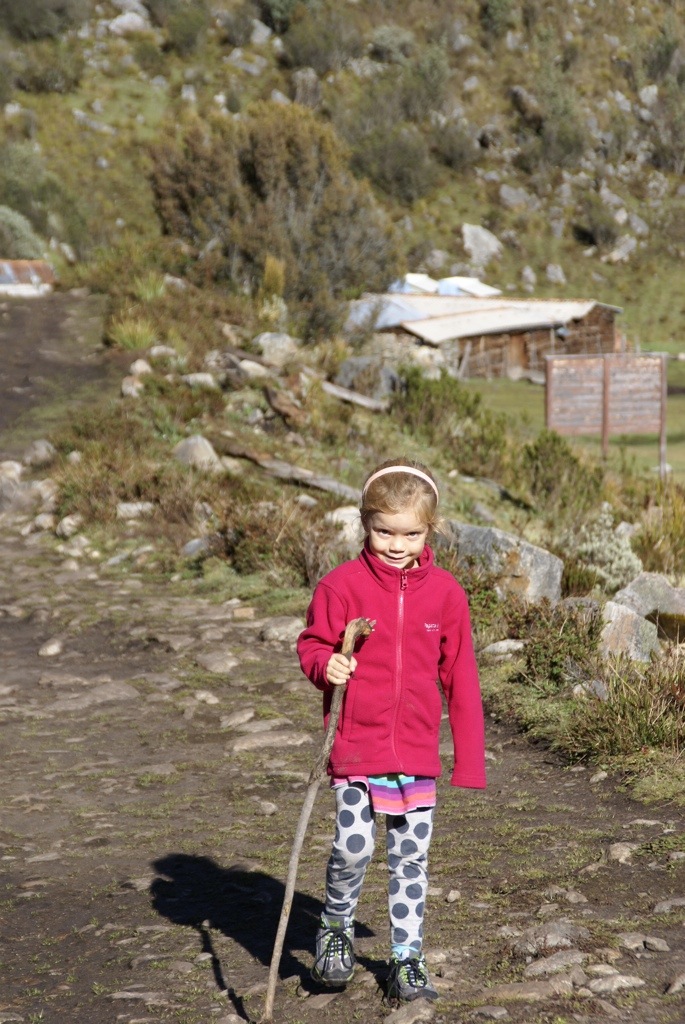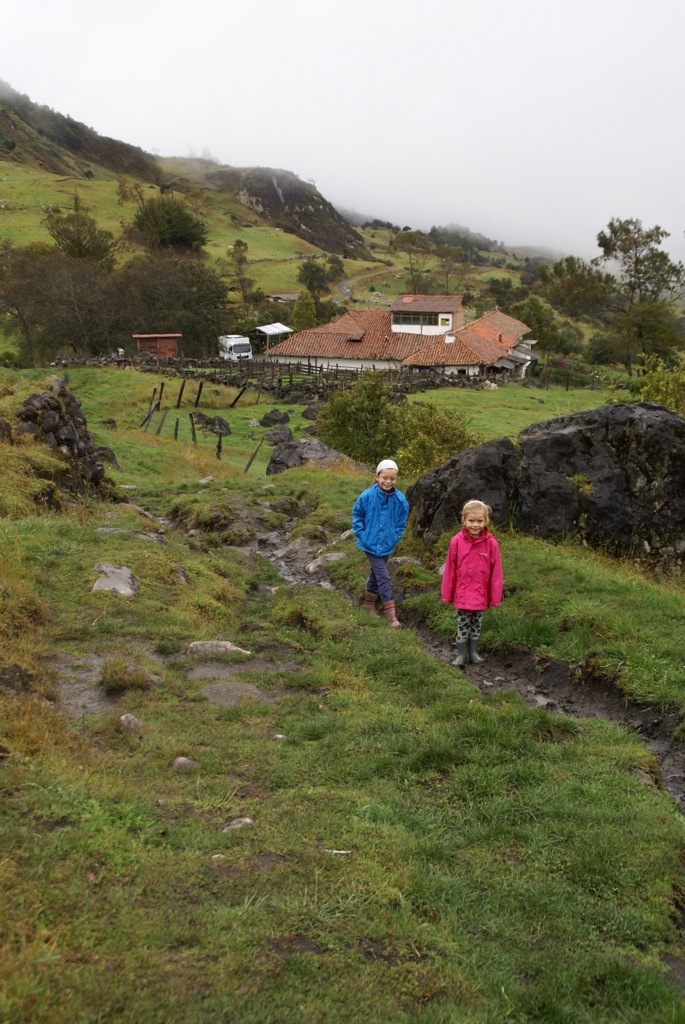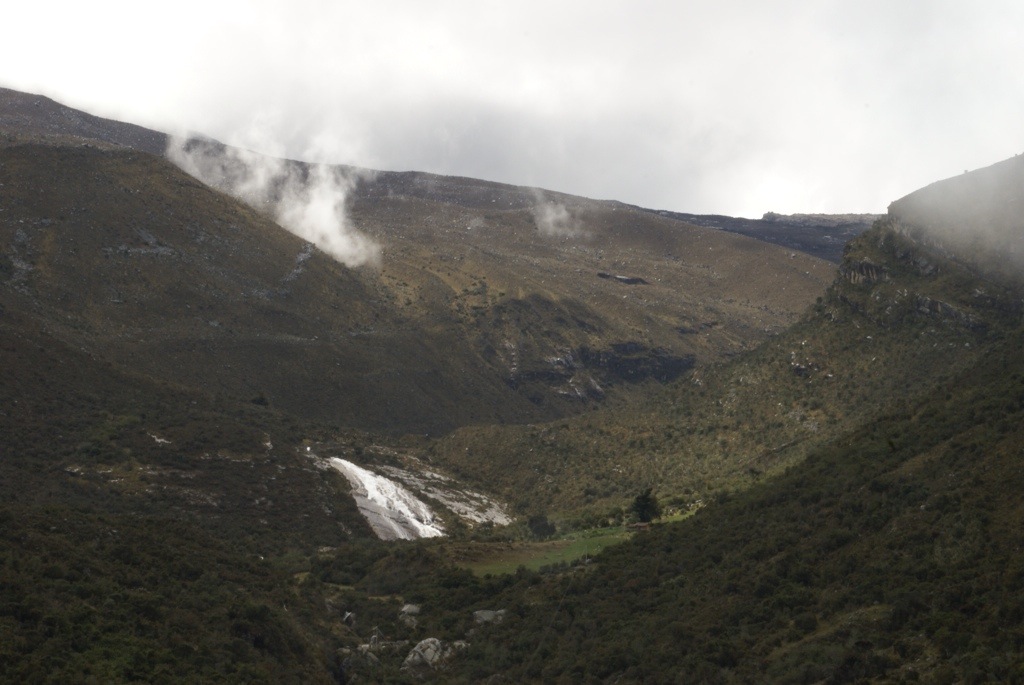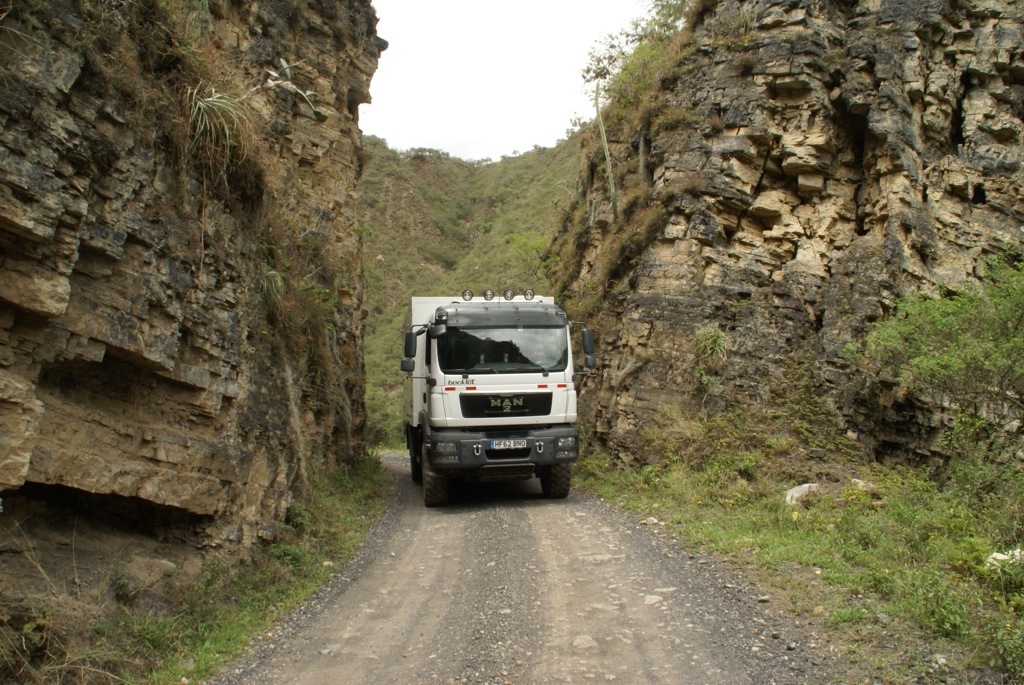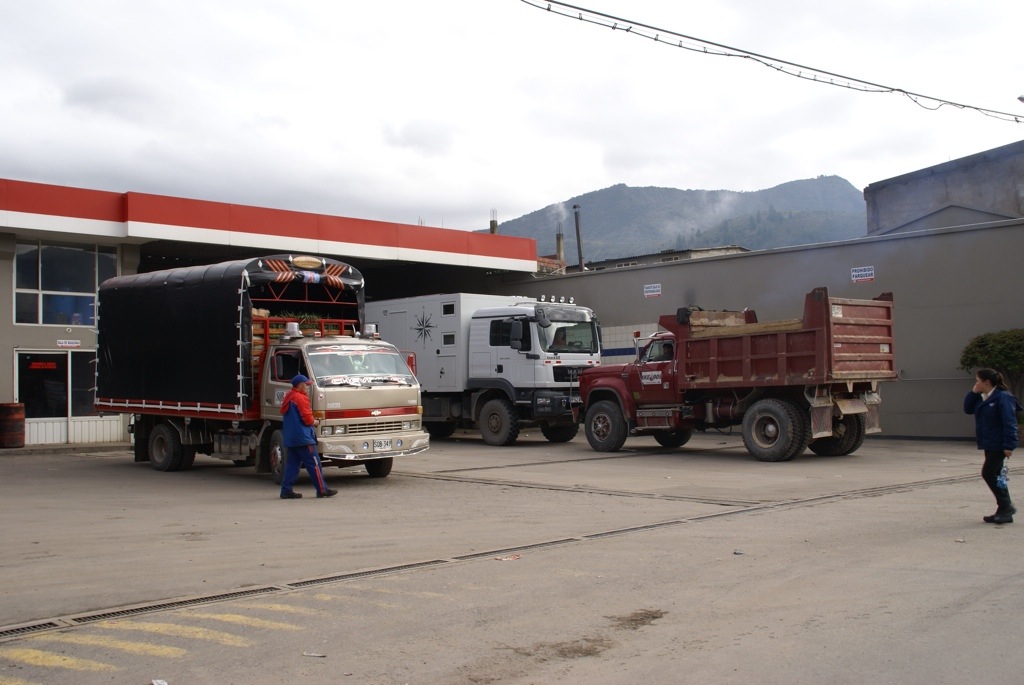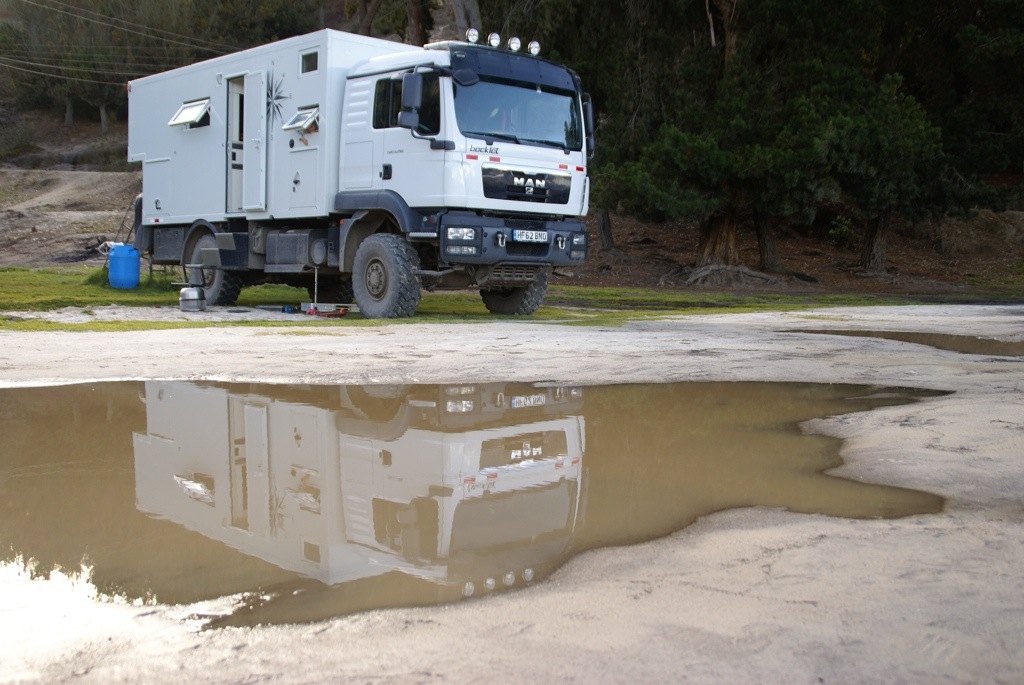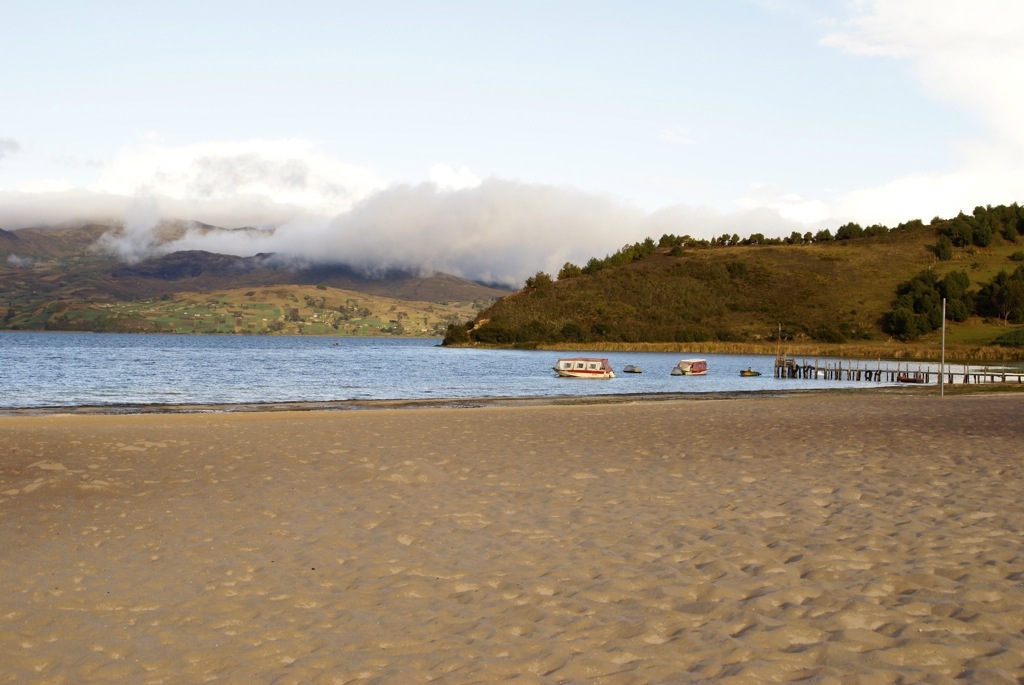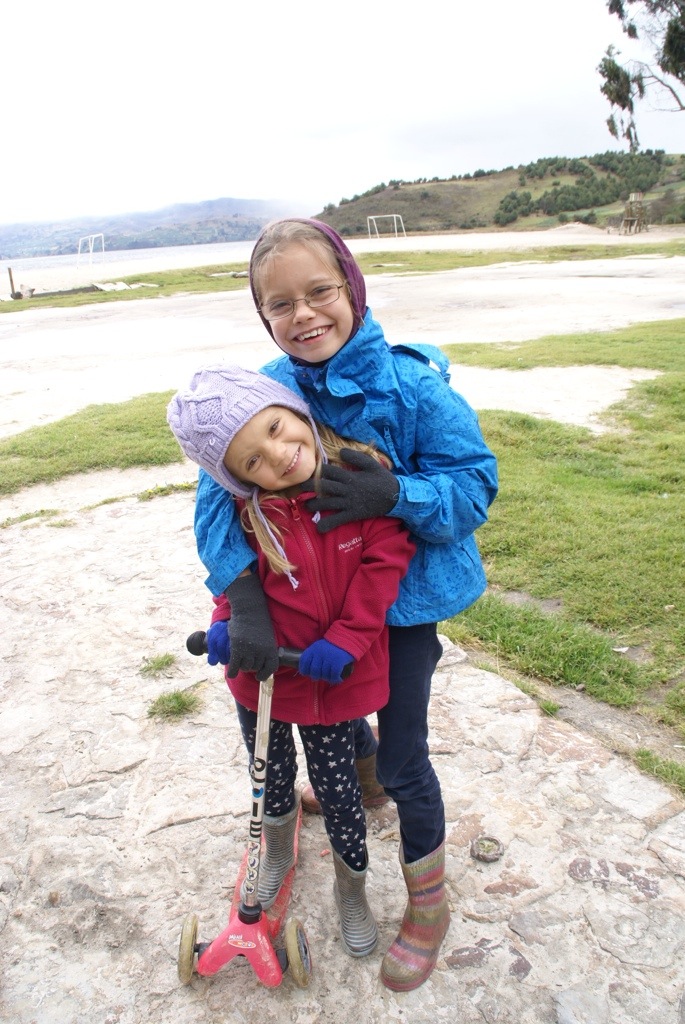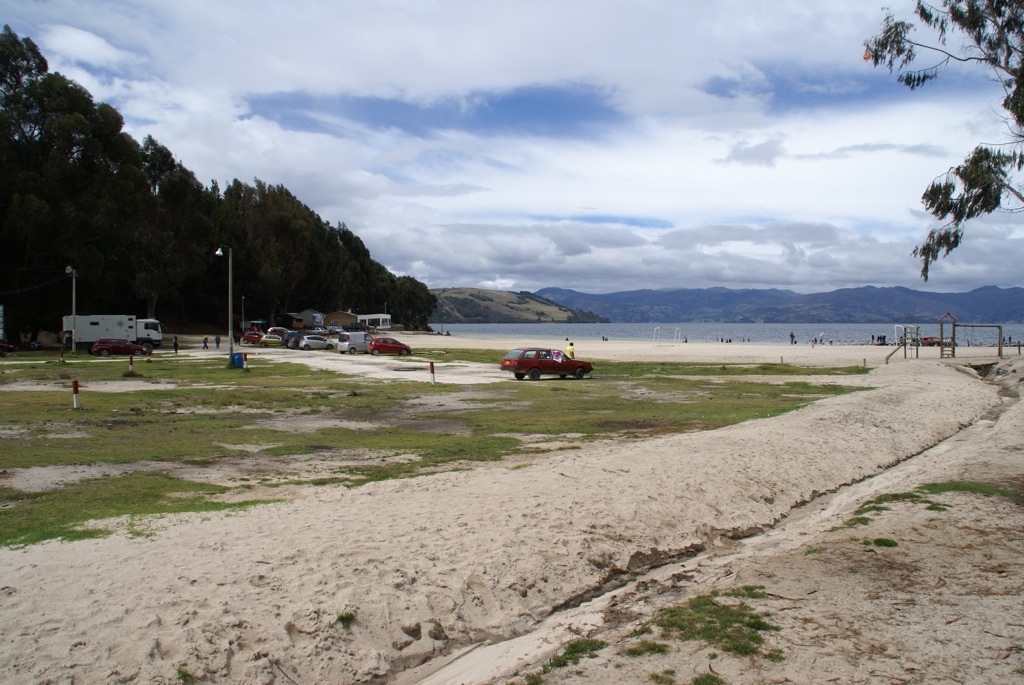Villa De Leyva is a pretty colonial city with one of the largest Plaza Mayor's (town square) in the whole of South America. A little like Barichara it has cobbled streets and white washed houses with green paintwork. Three hours north of Bogota it is a popular weekend trip for those from the city. As we drove in on Sunday afternoon, we could see the stream of smart cars leaving. Our base for the next few days was the pretty gardens of Hostel Renacer in the outskirts of the town.

As well as the chance to have a good look around the town and its surroundings, we'd also picked this spot to wait out a strike by small scale farmers in the whole country. We'd first heard of the strike from the helpful rangers at El Cucoy park the proceeding week. There had been a strike by many of the small scale farmers back in August. This had gone on for 25 days and had turned nasty with clashes between the farmers blocking roads and the police. As well as food shortages it had caused widespread disruption throughout the country as people's movements had been restricted by widespread road blocks. Eventually the farmers and government had come to an agreement about subsidies to help counteract the effects of the cheaper imports due to trade agreements. However they claimed the government hadn't made good on their promises and with presidential elections coming up in a month, the farmers are keen to get their grievances heard. We were not sure what to expect, last year 200,000 farmers had gone on strike but we couldn't get good information about who and where the road blocks might spring up. However we did feel the agricultural area around Laguna de Tota where we'd been the previous couple of nights was not our safest bet.
Fortunately for us there was no evidence of any problems in Villa De Layva. It returned to its usual sleepy weekday existence after all the Bogota visitors departed. We wandered around town and enjoyed the sleepy ambience of the town. Hanging out in a hostel for a change gave us a chance to meet up with backpackers. We hiked up into the hills above the town and took a look at the famed "El Fossil". A large fossilized almost intact Kronosaurus, a marine dinosaur. Lucy was in dino heaven.
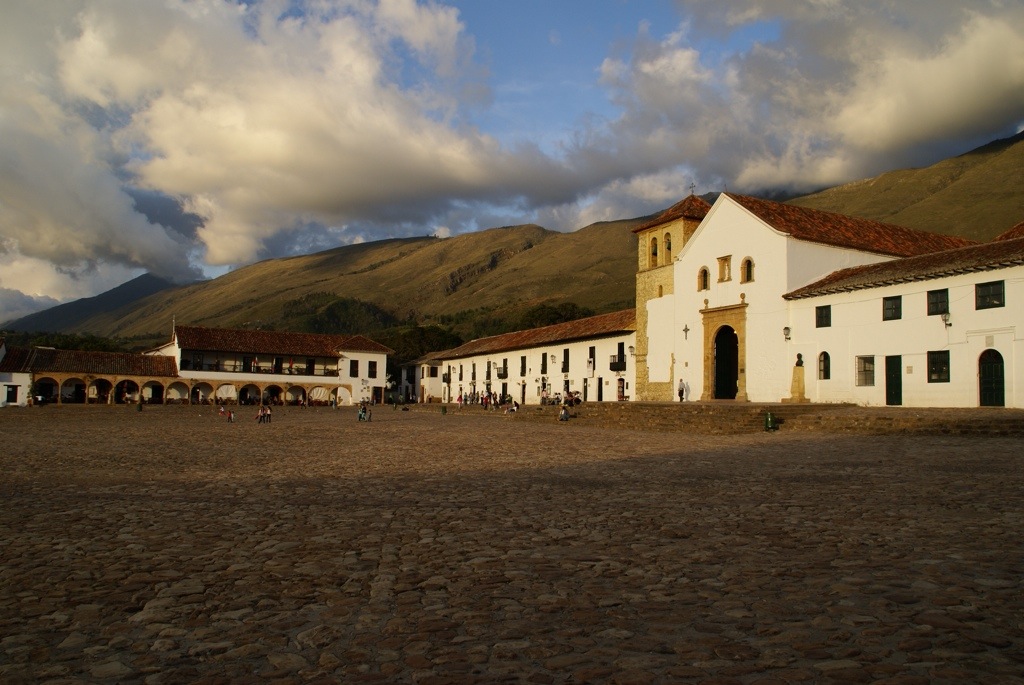
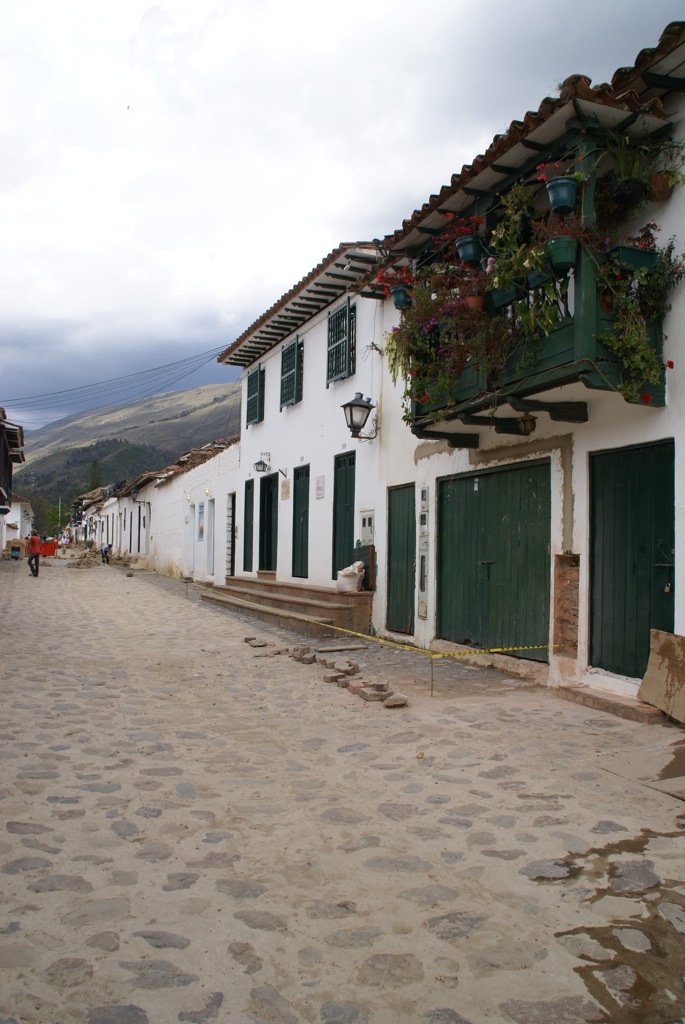
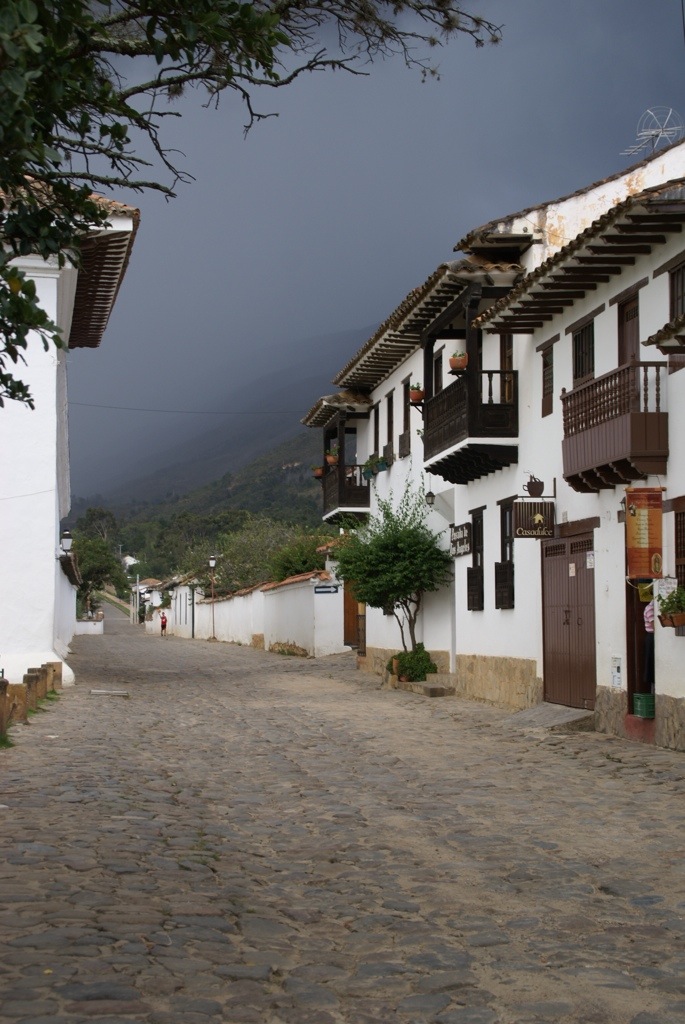
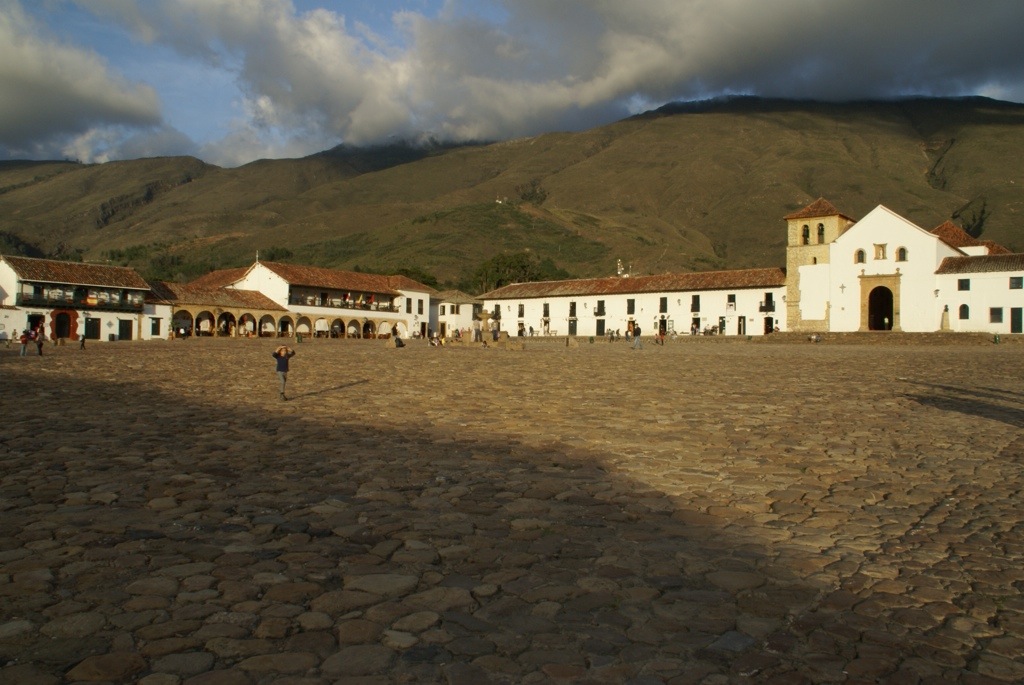
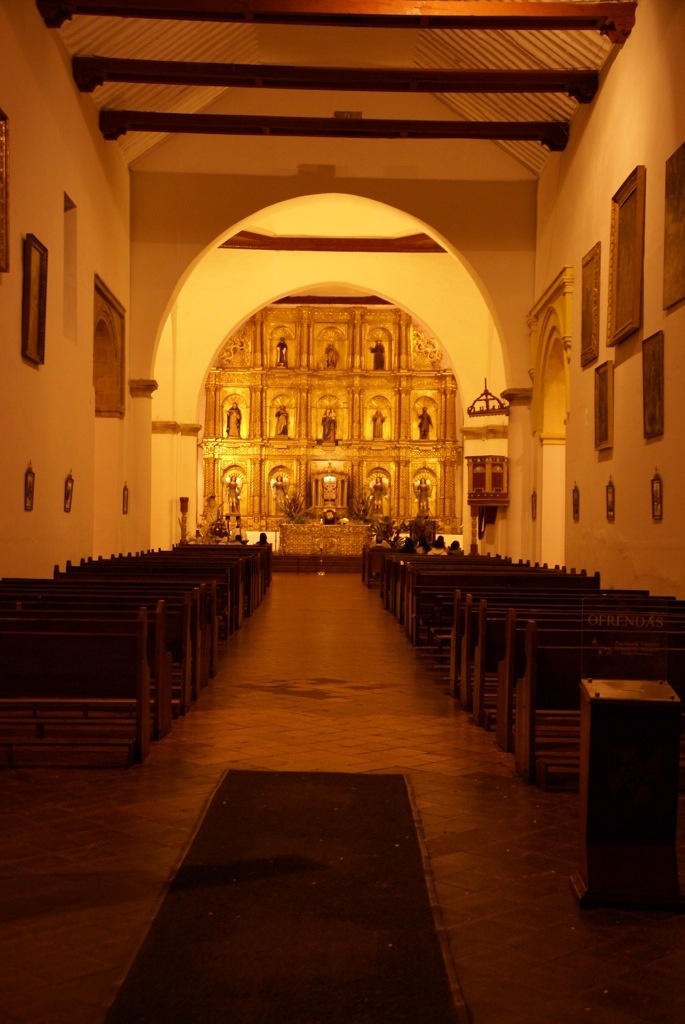

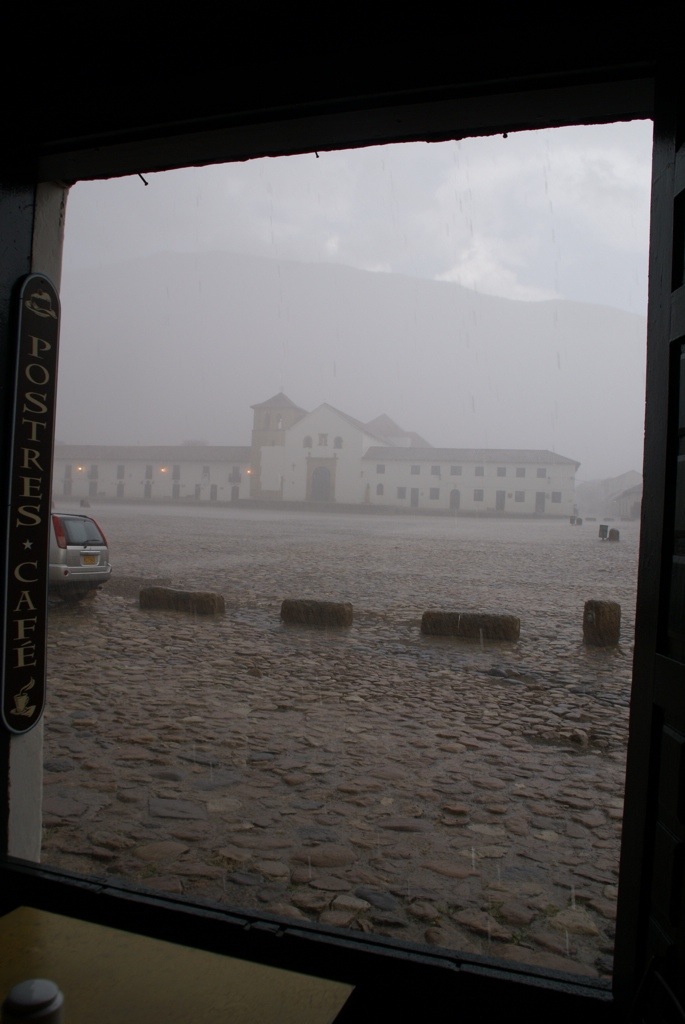
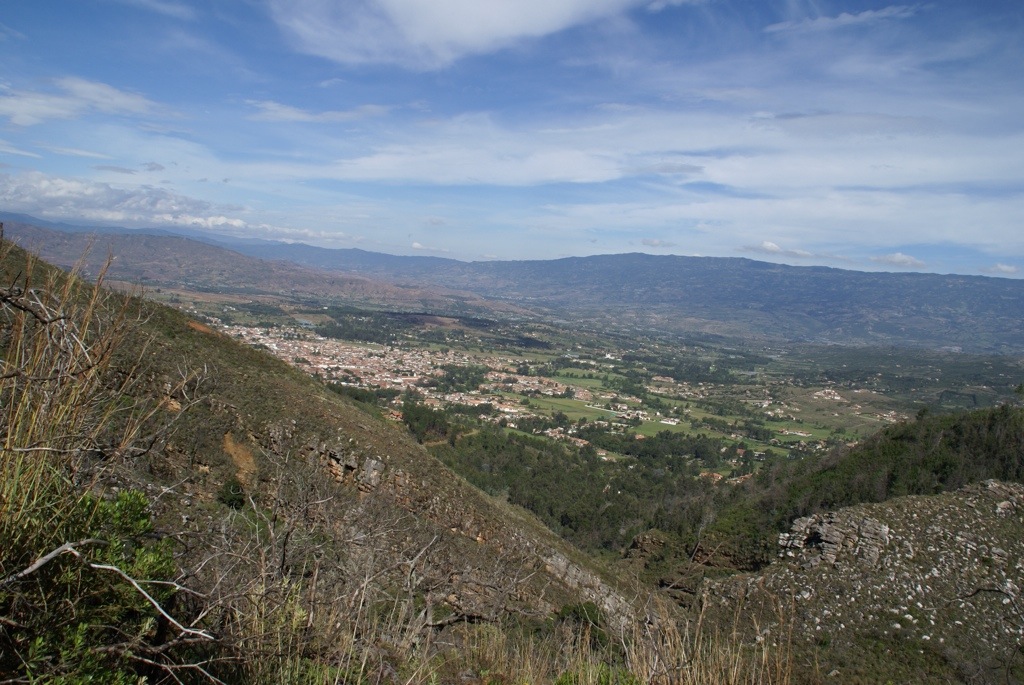
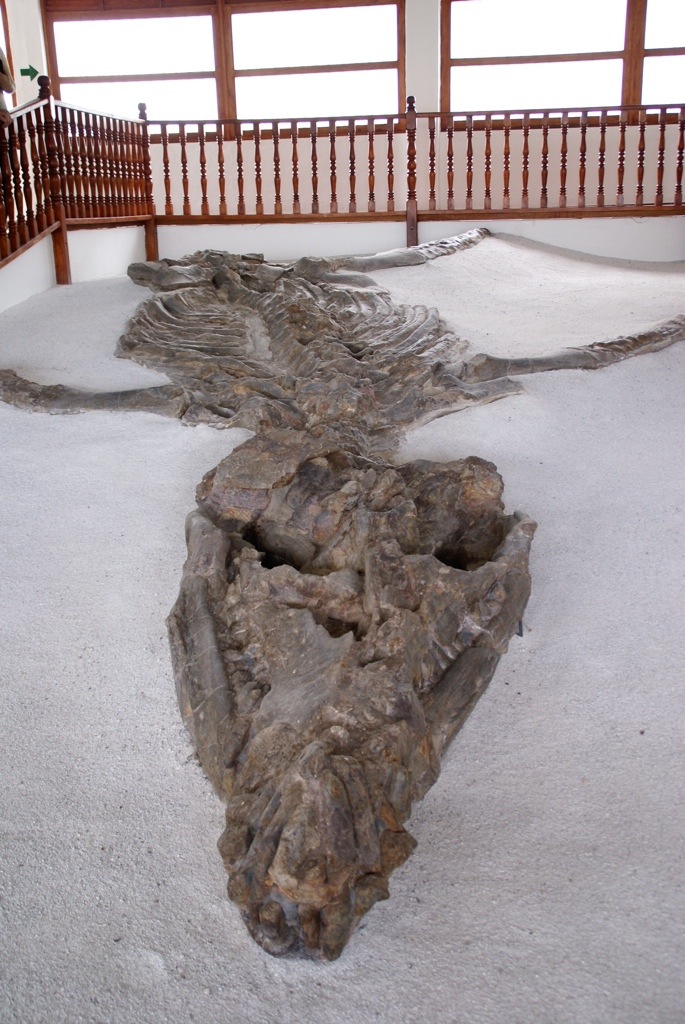
The strike appeared to be a lot quieter than the last year and not as wide spread. The bad news for us was that Tunja, the main town of Boyaca province and where the main road in and out of Villa de Leyva started, was one of the worst affected. Watching the online news we saw that although much of the road blocks had been reasonably quiet, several buses had had windows broken from rocks been thrown. Our mood wasn't lightened by a visit to the tourist office to find out if they knew any more. They wanted to know exactly who we were and where we were staying in case there was any manifestations of the problems ??!? We weren't planning on leaving the following day anyway but we resolved to find out as much as we could the morning after that before our planned departure. It was difficult to separate fact from hearsay from both locals and travellers.
Steve set out early to the police station, bus station and taxi rank to hear what the news was. No buses were running at all but the police were very helpful and suggested we leave town that morning via a route that bypassed Tunja as negotiations between the farmers and the government were still taking place. With a couple of French travellers who were keen to leave town, we headed out with a little trepidation. Although in little real danger, it was at the forefront of my mind that encountering angry farmers who may be enraged by police responses was not where I wanted to be with my family and my "home". The police and army were visible as we left town but there was very little other traffic on the road. We came across a road block a few kilometers from town, the protestors waved to us to stop. One jumped up on the cab and told us there was a strike and that we couldn't pass. We politely but firmly repeated several times that we were tourists with children just trying to get to the next town. We didn't fully understand everything he was saying and after a minute one of this comrades told him to let us pass. Thankfully they didn't really want to waste their time stopping a group of stupid tourists. There was police present a bit further down the road but they didn't seem to be taking much notice of what the protestors were doing, hopefully they would have if there had been any problems. The rest of the road through the winding hills was eerily quiet but we encountered no other protestors but we did come across police in their riot gear at several junctions heading south.
The town of Zipaquira sits on a naturally occurring hill of salt. It has been excavated for many hundreds of years. In the last century the extraction has been so great that it has created huge caverns underground. Within these caverns the miners created a cathedral made out of salt. Within the mines they also formed 13 smaller chapels dedicated to Jesus's road to the cross. The place really impressed us with its raw beauty. Even Steve, who is rarely moved by religious architecture and art spent ages photographing the changing lights.
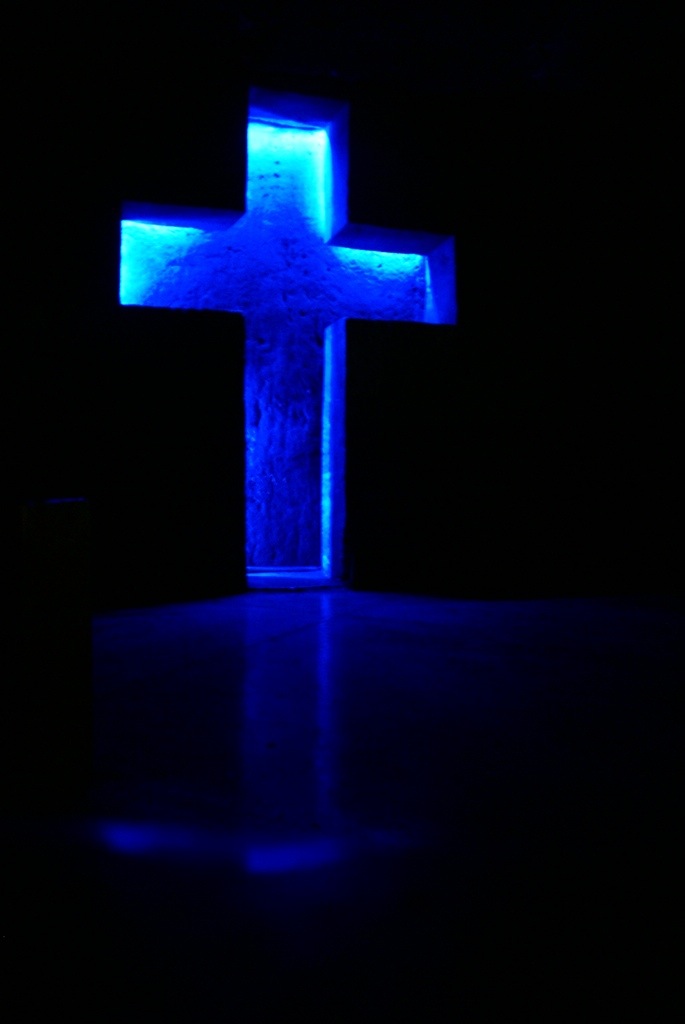
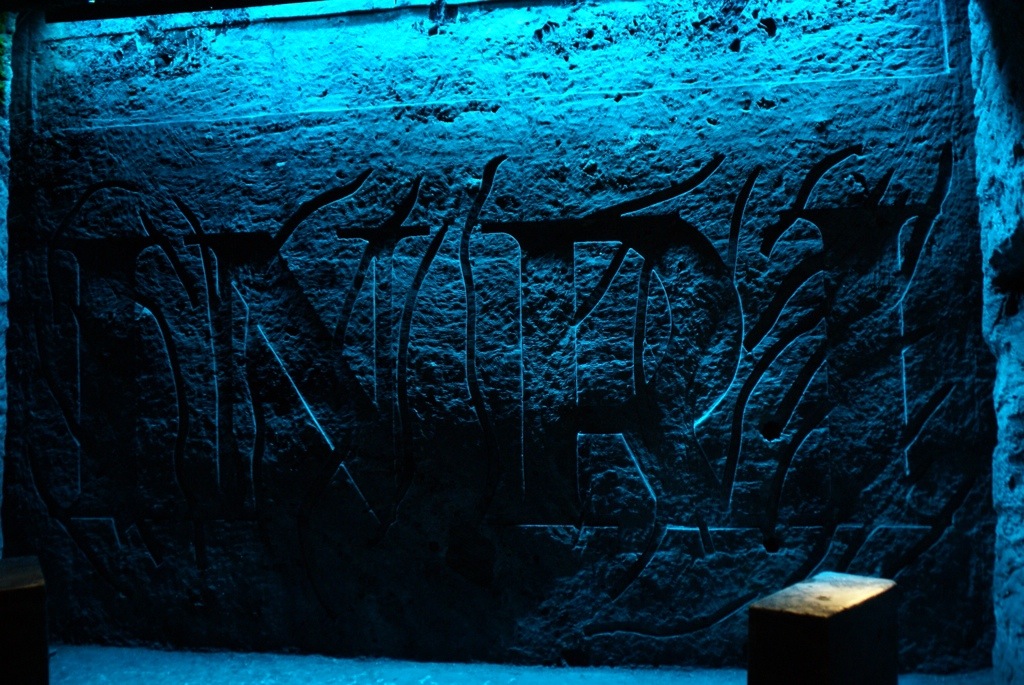

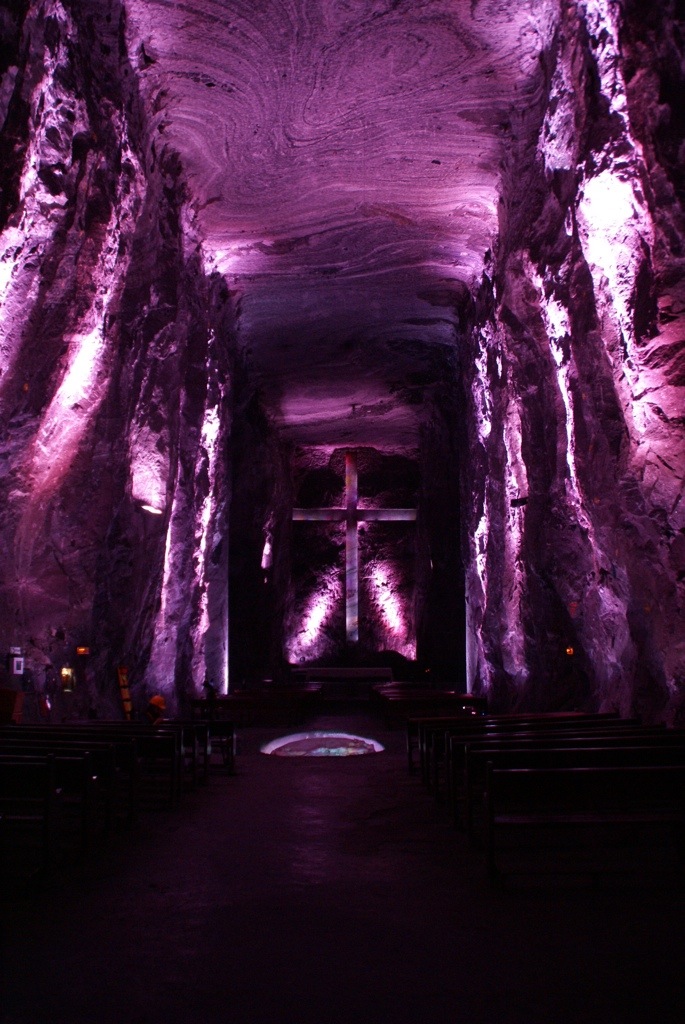
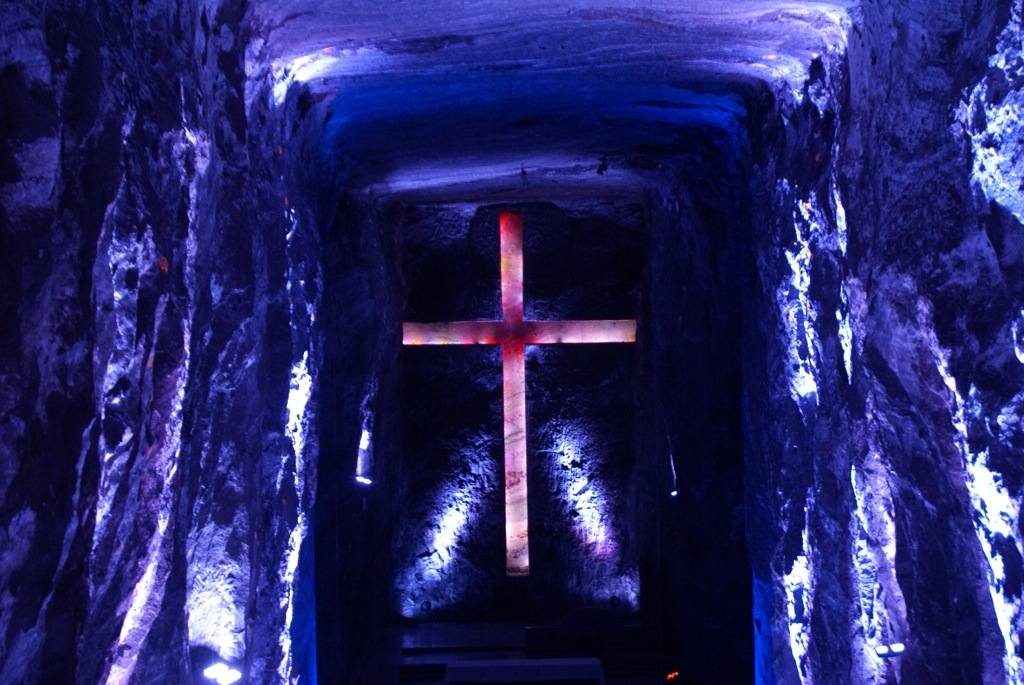

We arrived exhausted in our spot for Bogota, a secure car park in the suburbs, after a bizarre day combining avoiding protests with religious art. Although not the most classy spot in town, it was handily at the terminus of their public transport system.
Workers Day or the 1st May is a public holiday in Colombia and we were not sure how our planned visit to the centre would pan out. We arrived in town early to find the streets mostly deserted apart from a large presence of police. The sight of an armored troop carrier and police in riot gear is not something you hope to see at the start of a sightseeing trip. Colombians are a friendly lot and the police confirmed that they were expecting a large rally at midday, they even posed for a photo with their riot shields.
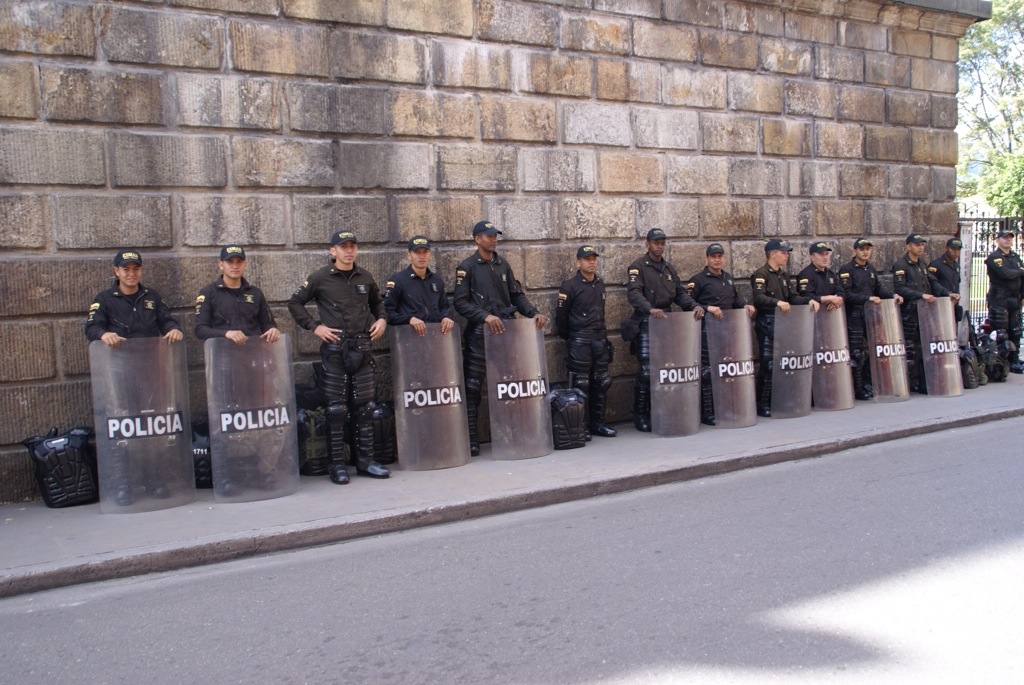
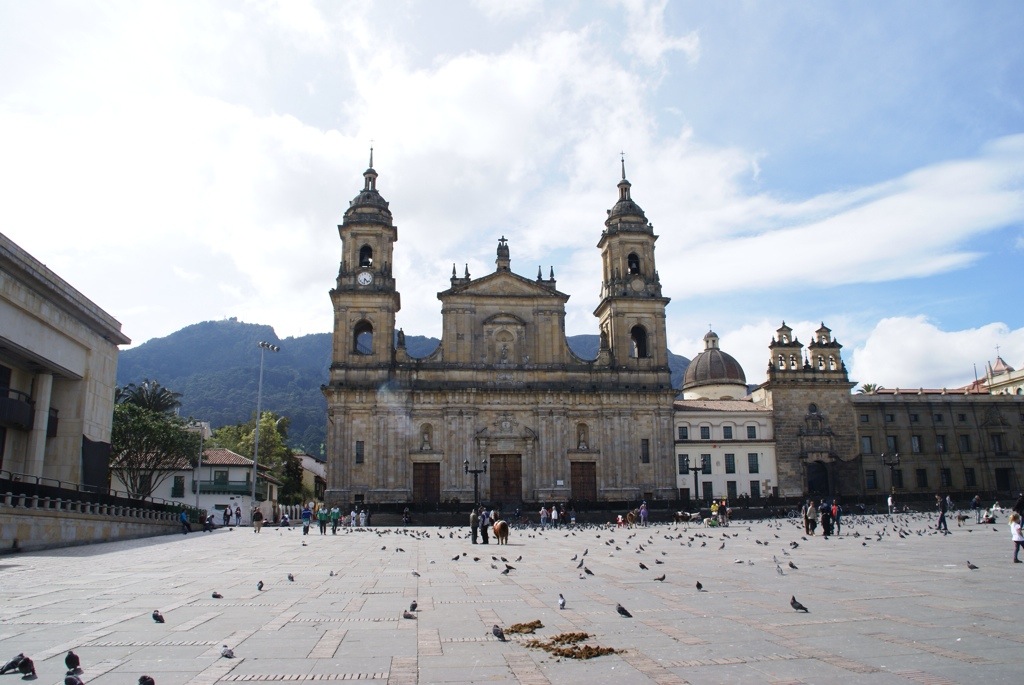
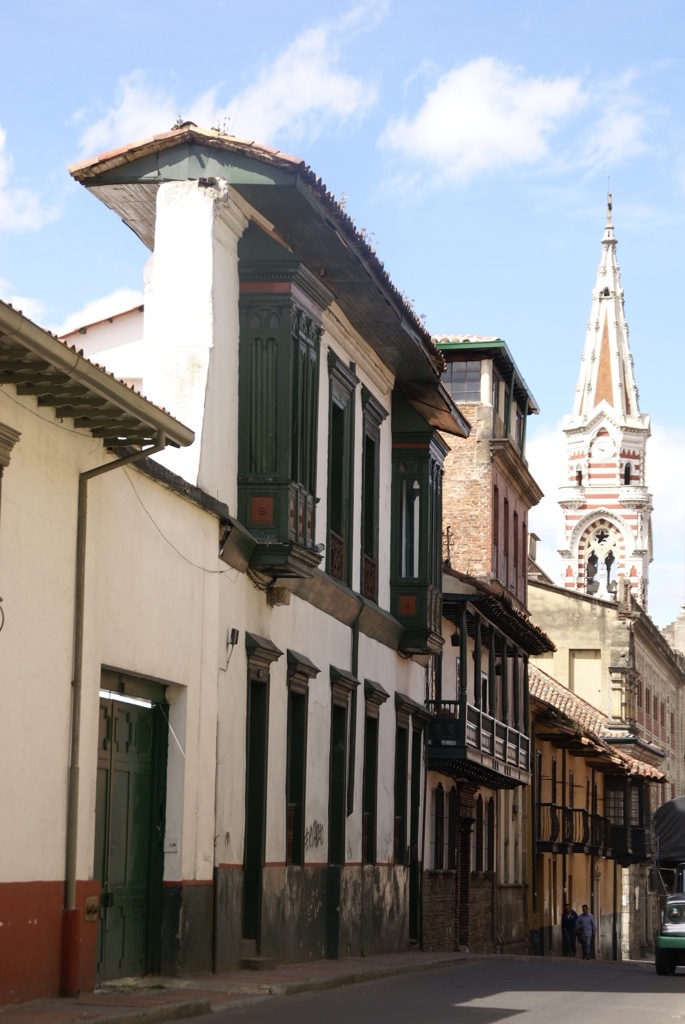
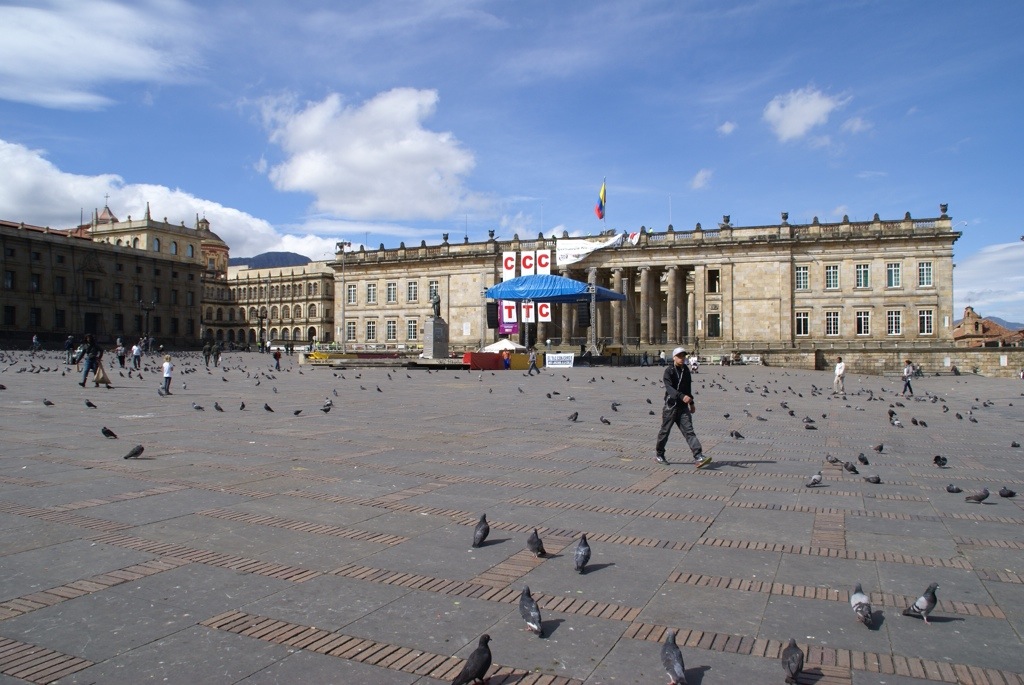
The two central museums we'd hoped to see were closed, that combined with the fact that the streets just out from the central district were deserted and very dodgy looking made me feel rather uncomfortable. We jumped in a taxi to take us just 2 kms up the hill to the bottom of a forest covered peak, which was a whole world away. Families were taking day trips up the cable car and we joined the throngs enjoying the view of the city. Not wanting to give up on the city quite just yet, once down we took a taxi to the northern suburbs to see a very different view of the city with smart restaurants and fancy shops. We decided to rework our plans and return to the city centre the following morning to see the Gold Museum and Botero musuem. We read online later that night that the rally in Bogota had gone off without incident.
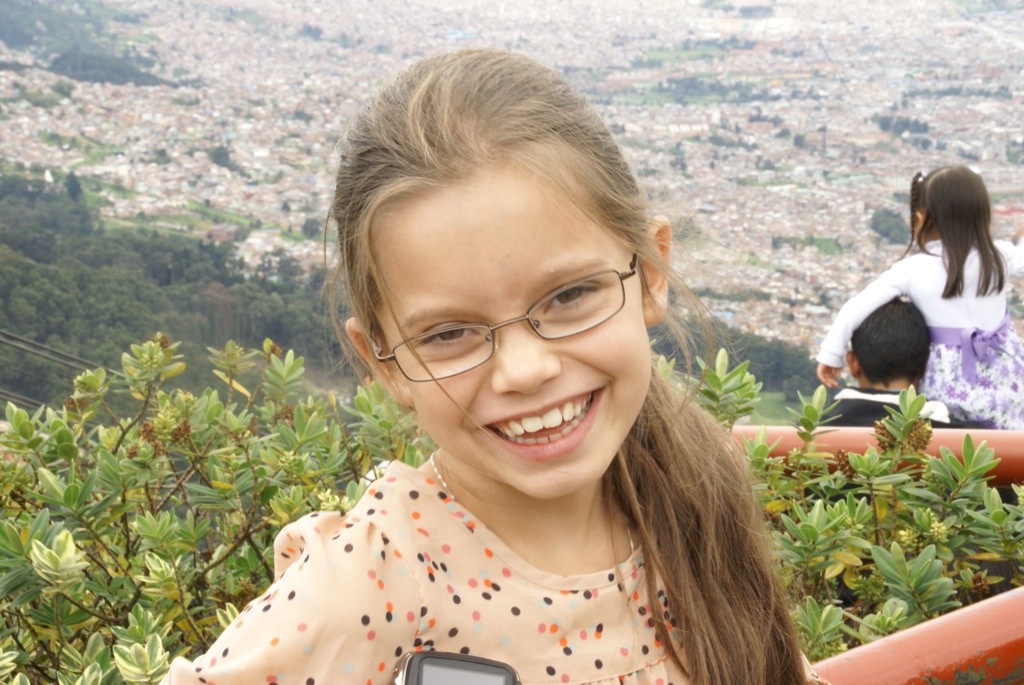
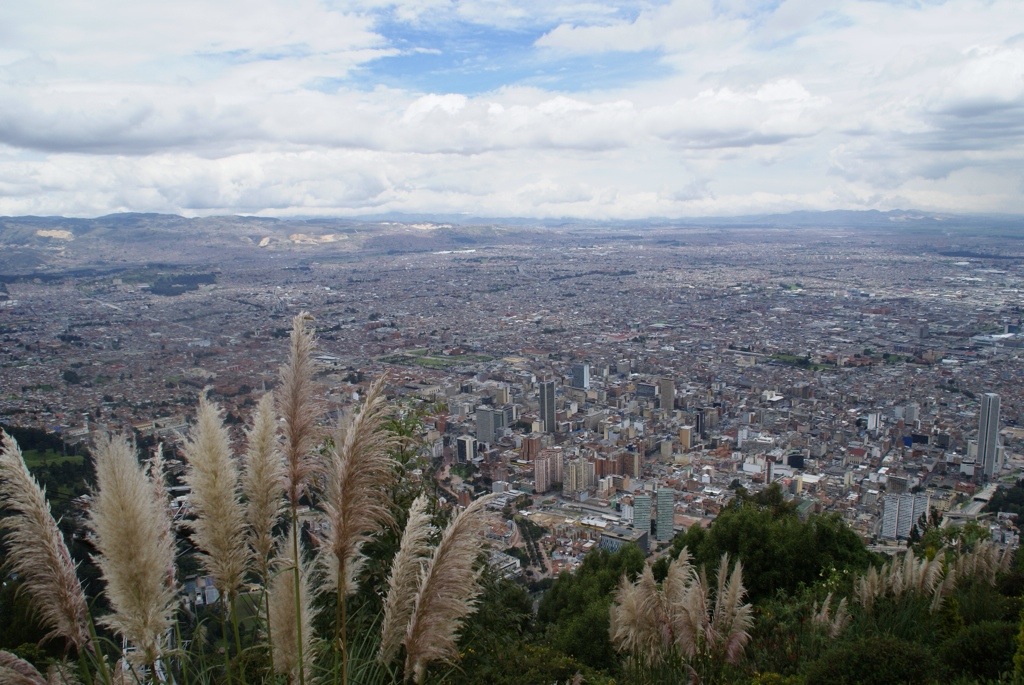
What a difference a day makes, returning the following day the deserted "dodgy" looking streets looked perfectly normal full of shops and pedestrians. The gold Museum was filled with incredible pre-Hispanic objects of such complex beauty, that it was hard to believe they were crafted by artisans with such primitive tools.
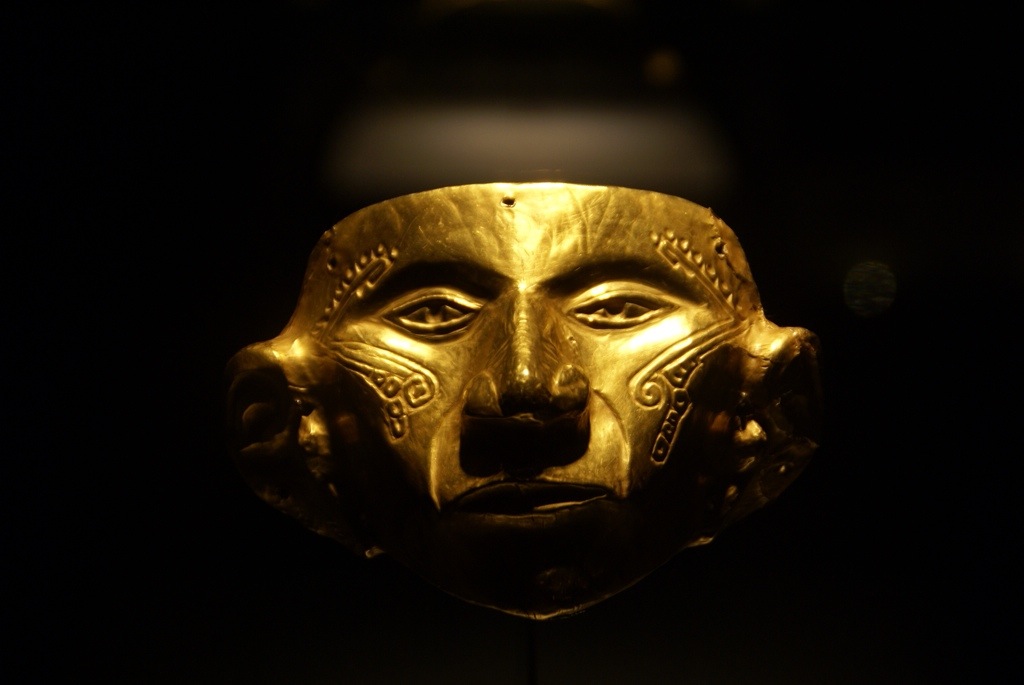
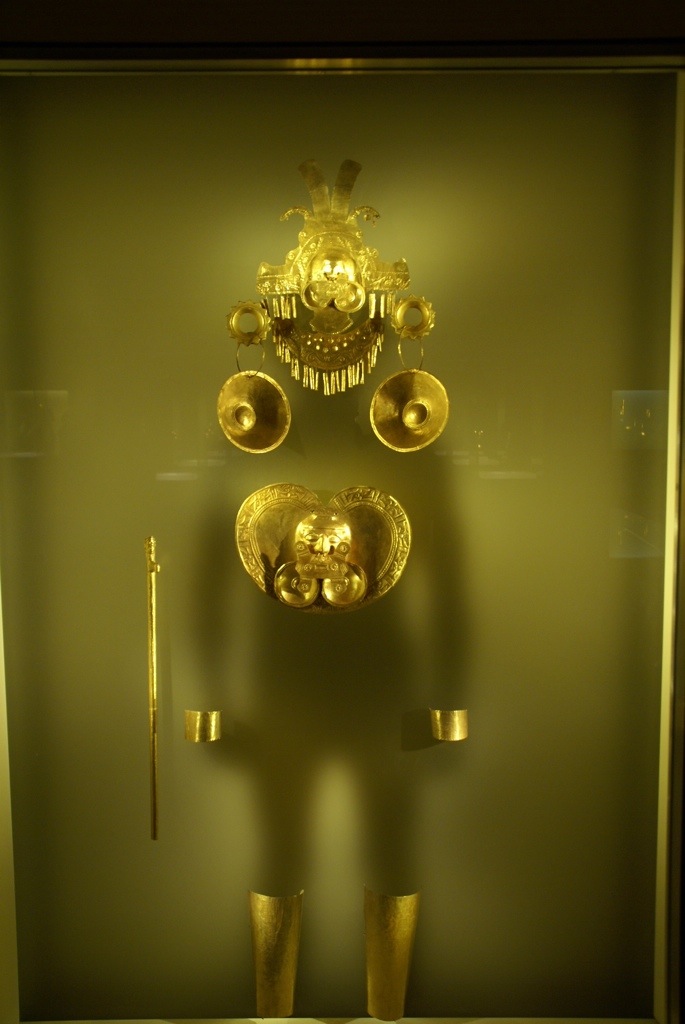
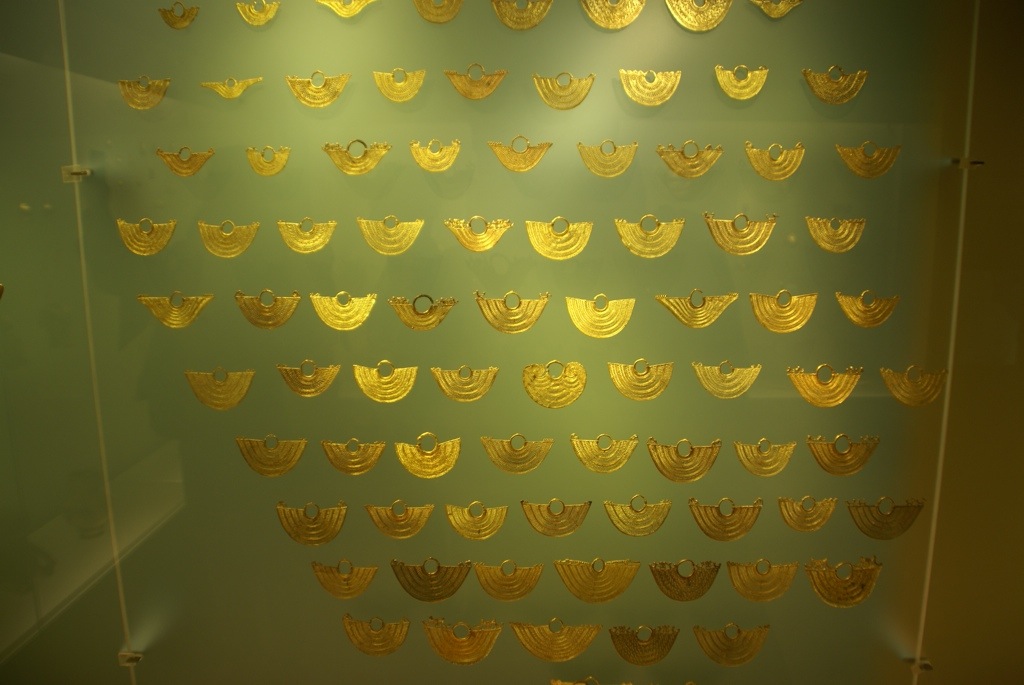
Colombia's most famous artist Fernando Botero has his own museum celebrating all things rotund.
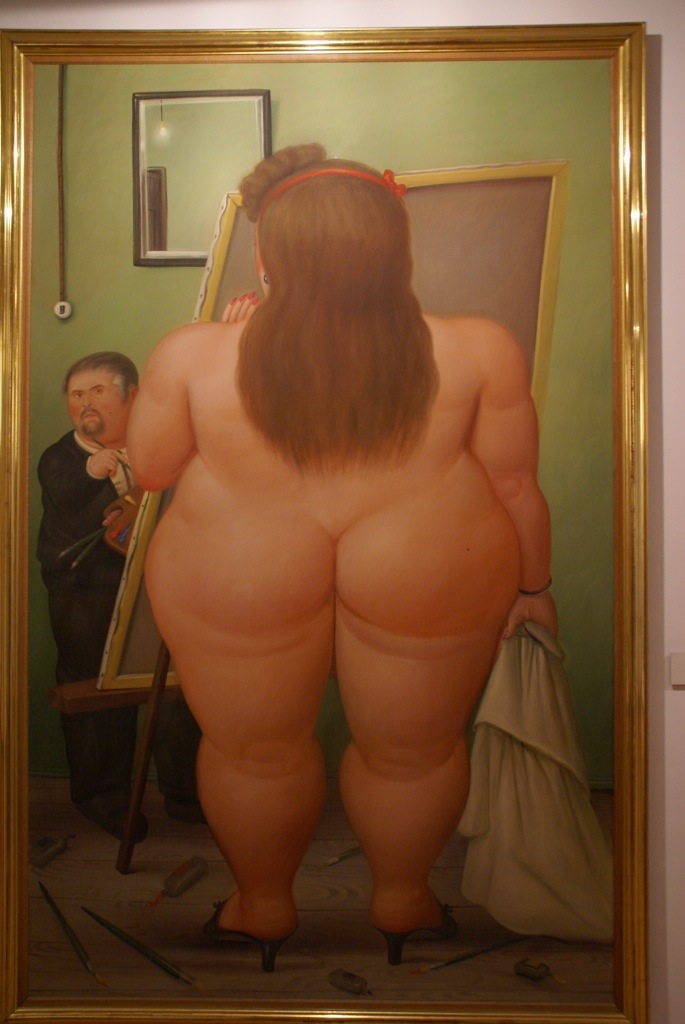
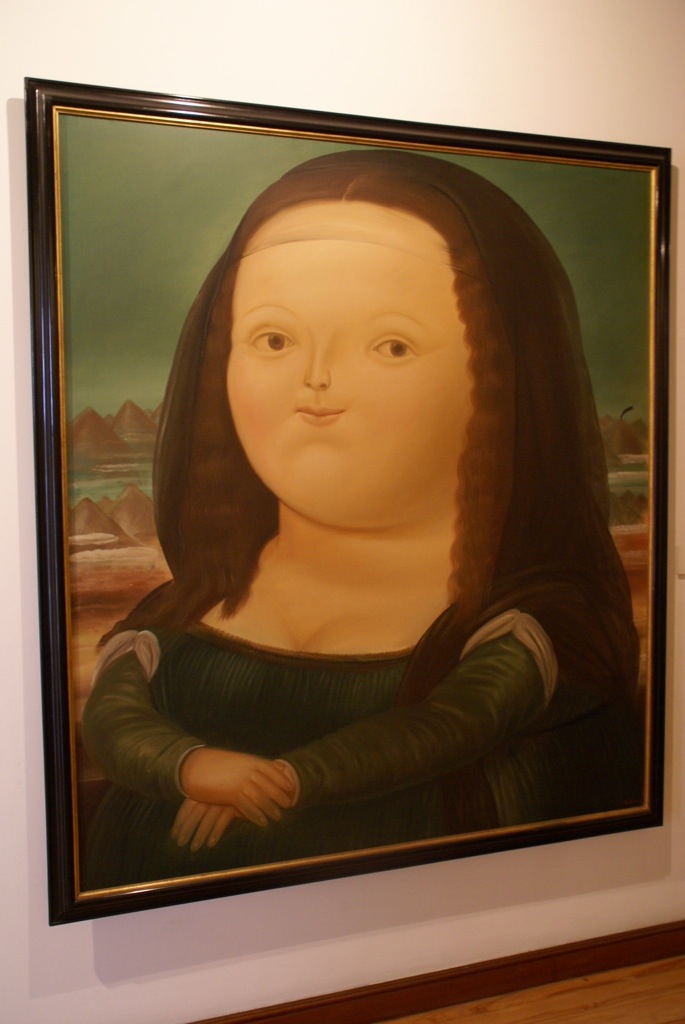
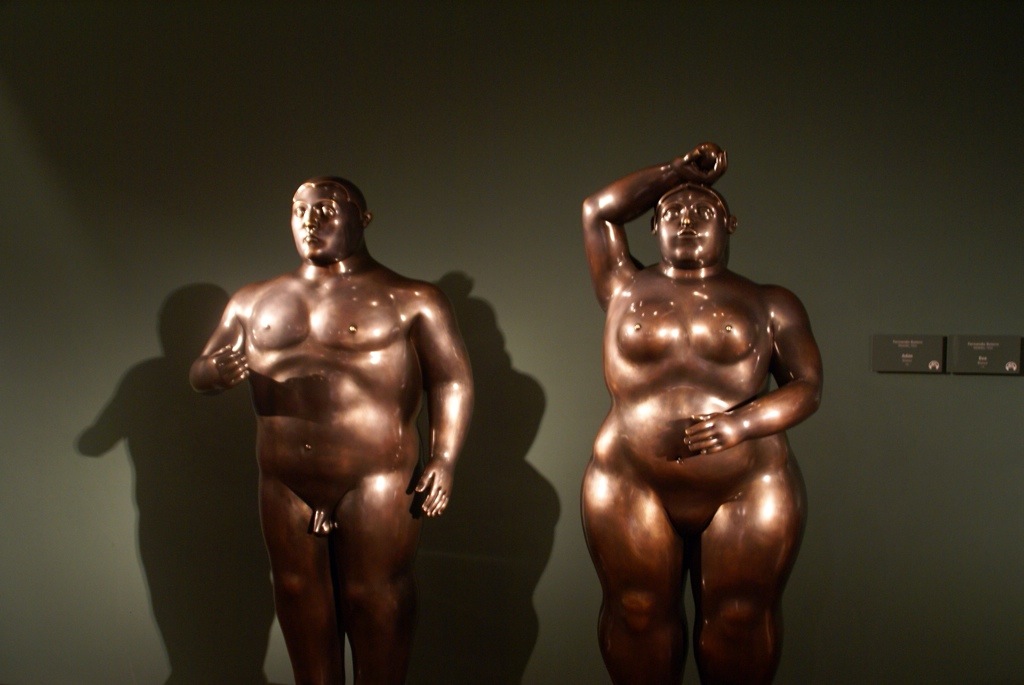
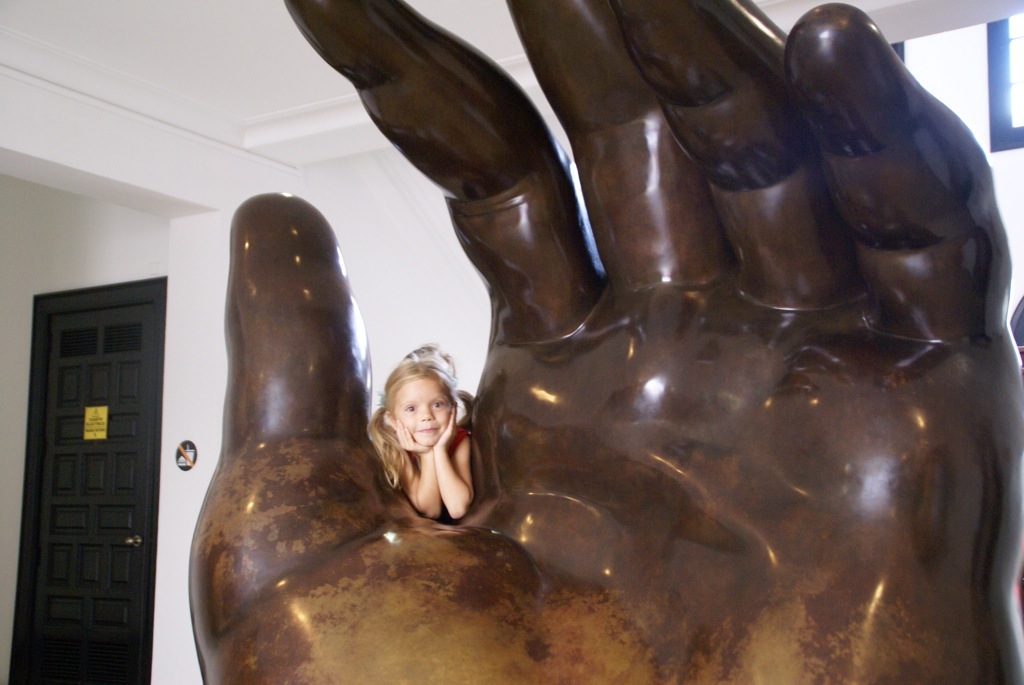
We'd been contacted by Bogotano Juan the day before as he was interested in travelling with his family. He had come across our website and we met up for lunch. We had a lovely few hours with Juan, his son Lorenzo and his good friend Diego, also a keen traveller, chatting about the trips we had all taken. He very kindly gave us a lift back to the suburbs to have a look round the truck. Another example of just how lovely and friendly the people are in Colombia.
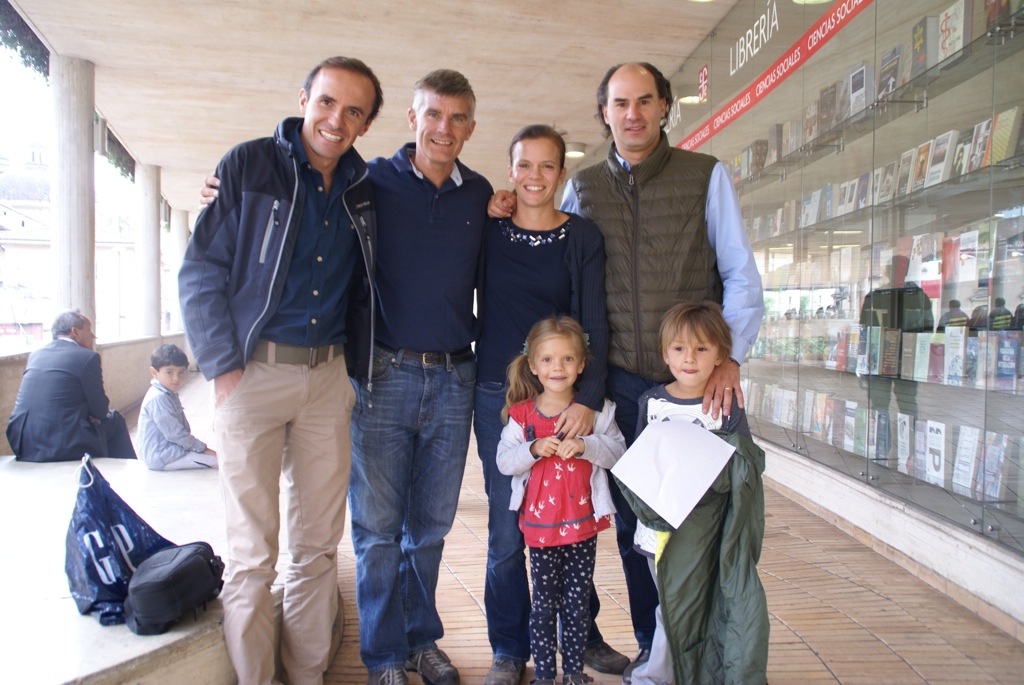
Just as we were about to pull out of the car park we picked up an email from John and Betti, other truck travellers we've been bumping into along the way. They were just a few kilometres away, so we cancelled our plans to leave. They drove over and we were all really pleased about seeing them again, as it might be a while as they are heading to Venezuela and we are heading south.
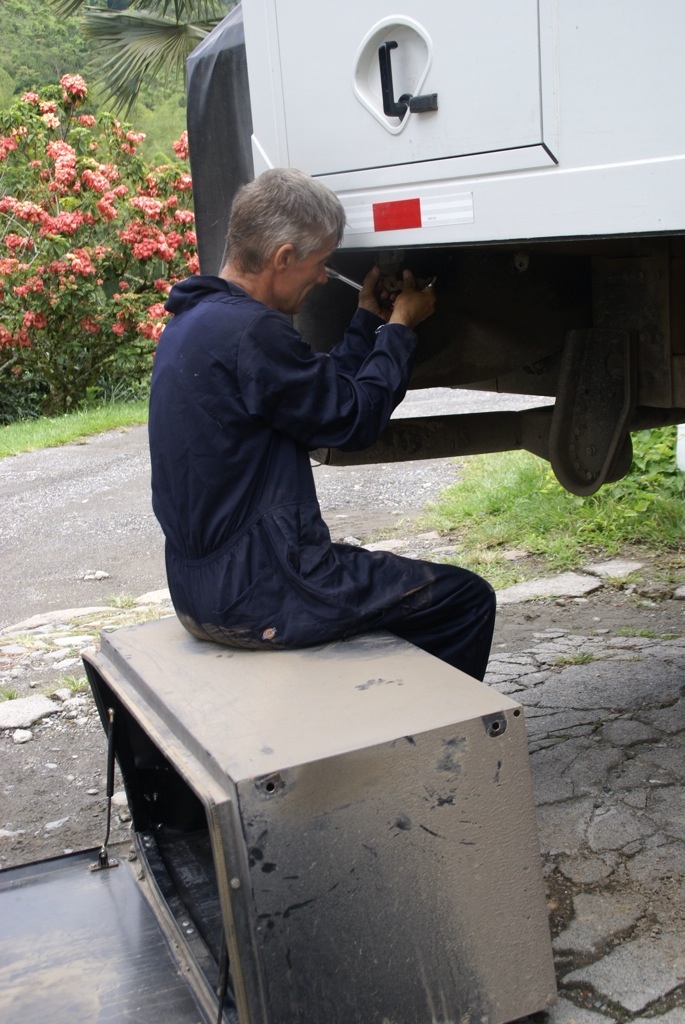 Whilst I made a little progress it was obvious I would need some more expert help. The manager of the hostel and the staff could not have been more helpful. They called out a mechanic who took all the bits away and came back the next morning with it all repaired. Mind you even I was surprised when he turned back up at 6.15am!
In the meantime we enjoyed our time at the hostel by swimming in the pool and taking a lovely walk around the coffee farm including seeing the lovely old farmhouse which has been converted into a boutique hotel.
Whilst I made a little progress it was obvious I would need some more expert help. The manager of the hostel and the staff could not have been more helpful. They called out a mechanic who took all the bits away and came back the next morning with it all repaired. Mind you even I was surprised when he turned back up at 6.15am!
In the meantime we enjoyed our time at the hostel by swimming in the pool and taking a lovely walk around the coffee farm including seeing the lovely old farmhouse which has been converted into a boutique hotel.
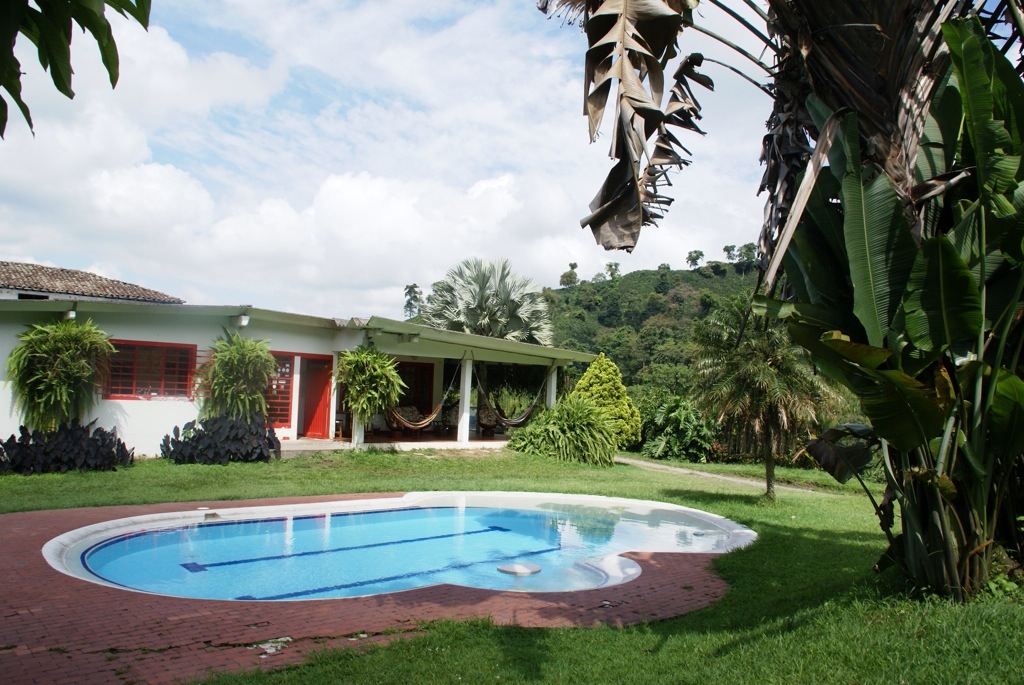
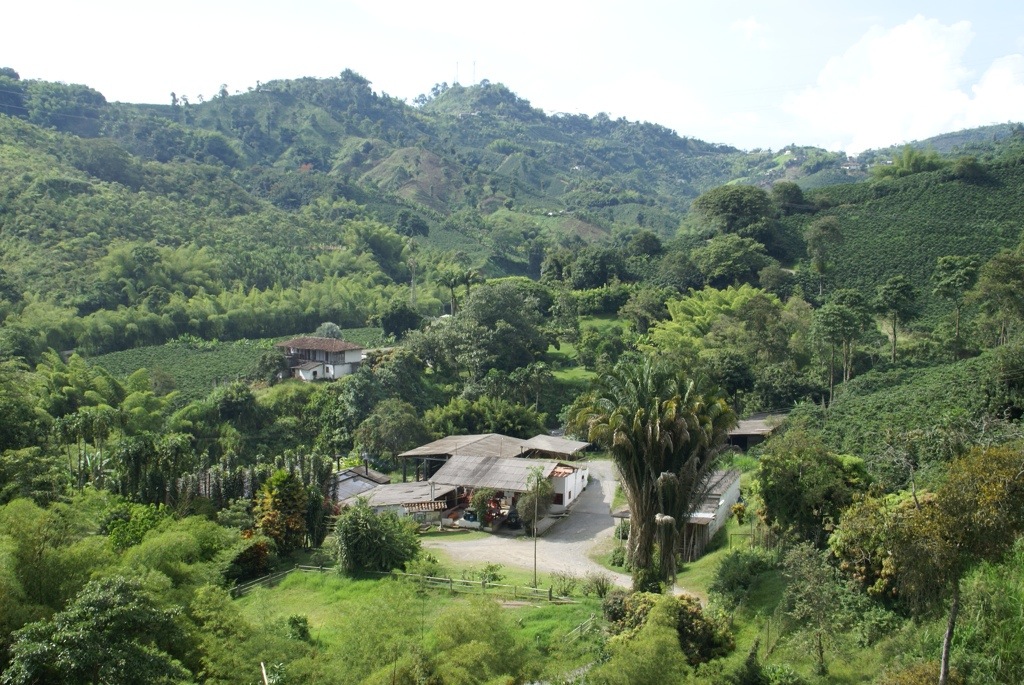

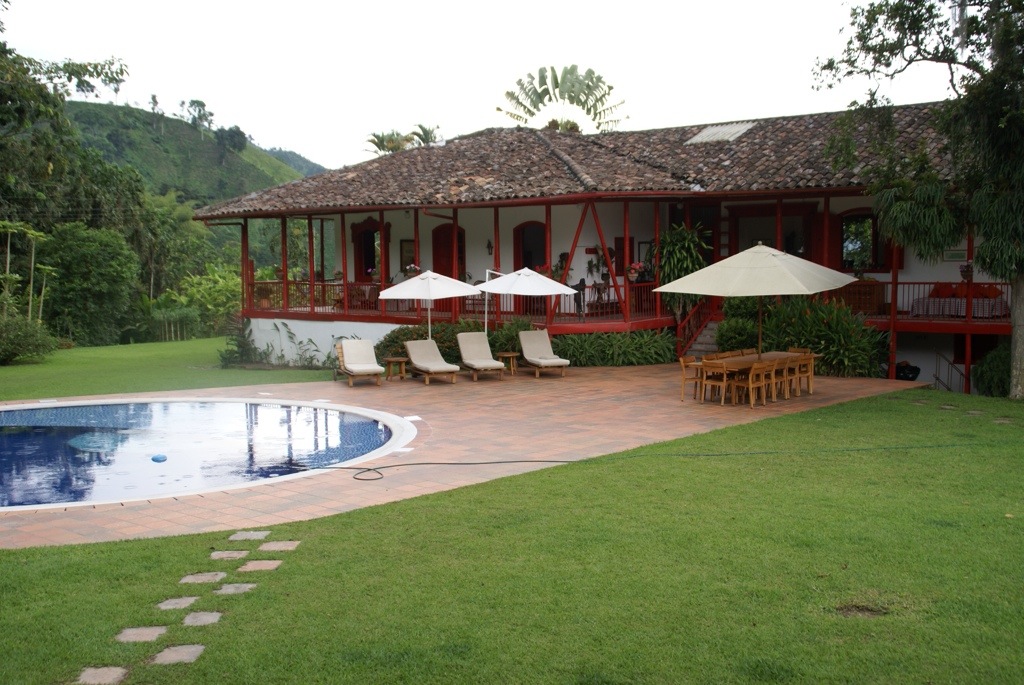 We also shared our parking lot with a Dragoman overland truck which brought back memories for Gilly and I as we met on a similar overland trip 19 years ago.
We also shared our parking lot with a Dragoman overland truck which brought back memories for Gilly and I as we met on a similar overland trip 19 years ago.
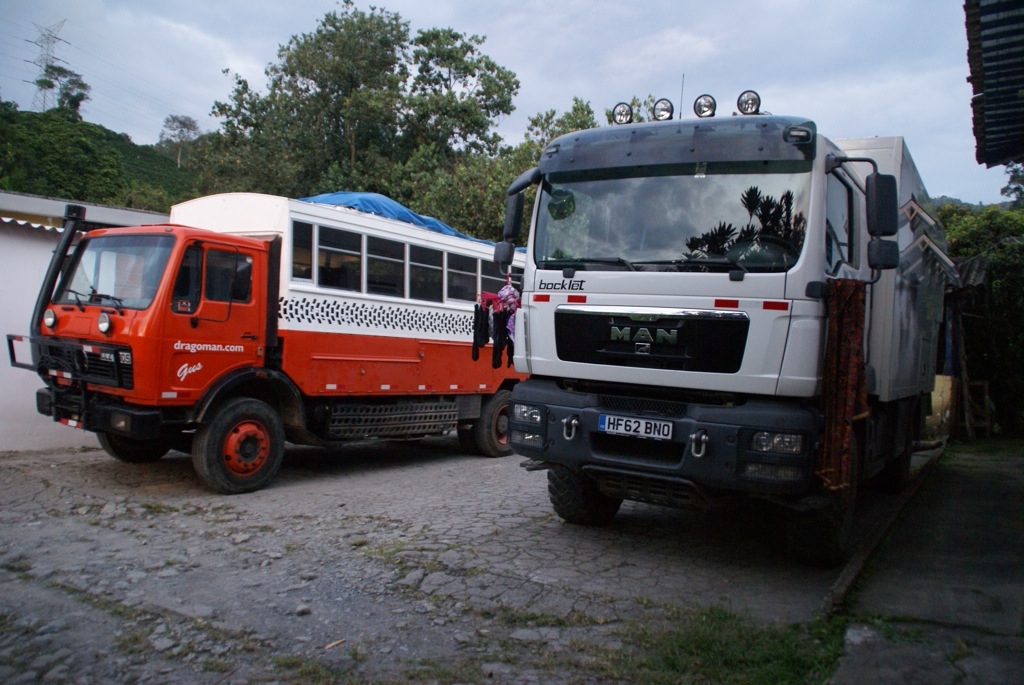 Hacienda Venecia is a lovely place which we would thoroughly recommend for backpackers, overlanders or anyone wanting a slice of luxury and it is run by the friendliest and most helpful people.
From there we headed to the Valle de Cocora which is a stunning landscape filled with the worlds largest palm trees. The Wax Palm can grow up to 60m tall and makes an impressive sight along the valley. When we got there we found a restaurant car park to stay the night in. As it was lunchtime we went straight into the restaurant to have a fantastic lunch of fresh trout for which the region is famous.
Hacienda Venecia is a lovely place which we would thoroughly recommend for backpackers, overlanders or anyone wanting a slice of luxury and it is run by the friendliest and most helpful people.
From there we headed to the Valle de Cocora which is a stunning landscape filled with the worlds largest palm trees. The Wax Palm can grow up to 60m tall and makes an impressive sight along the valley. When we got there we found a restaurant car park to stay the night in. As it was lunchtime we went straight into the restaurant to have a fantastic lunch of fresh trout for which the region is famous.
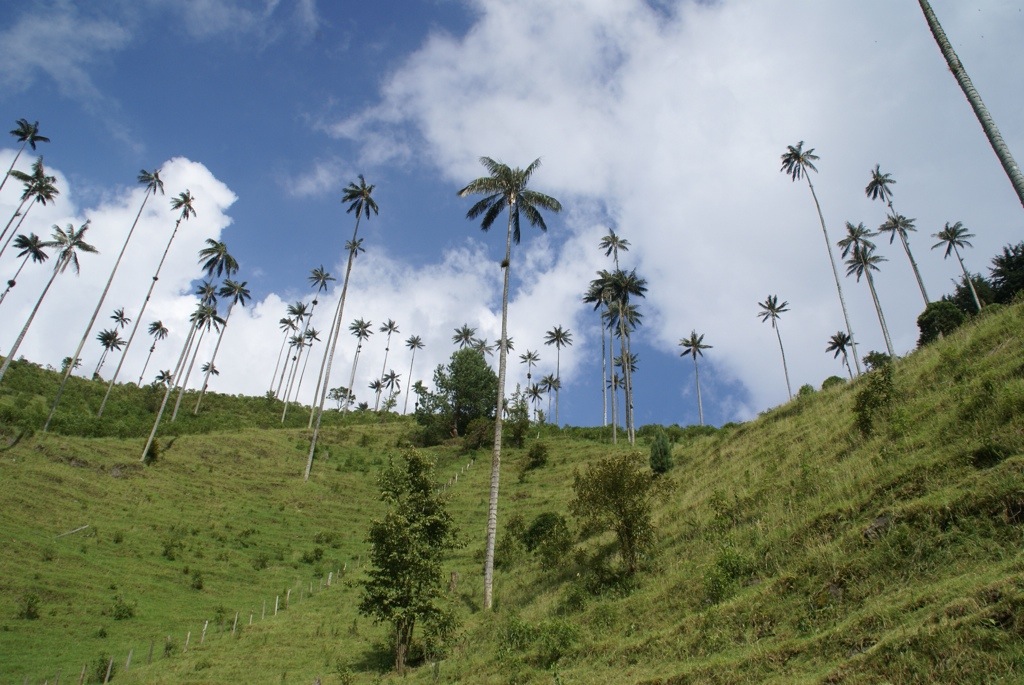
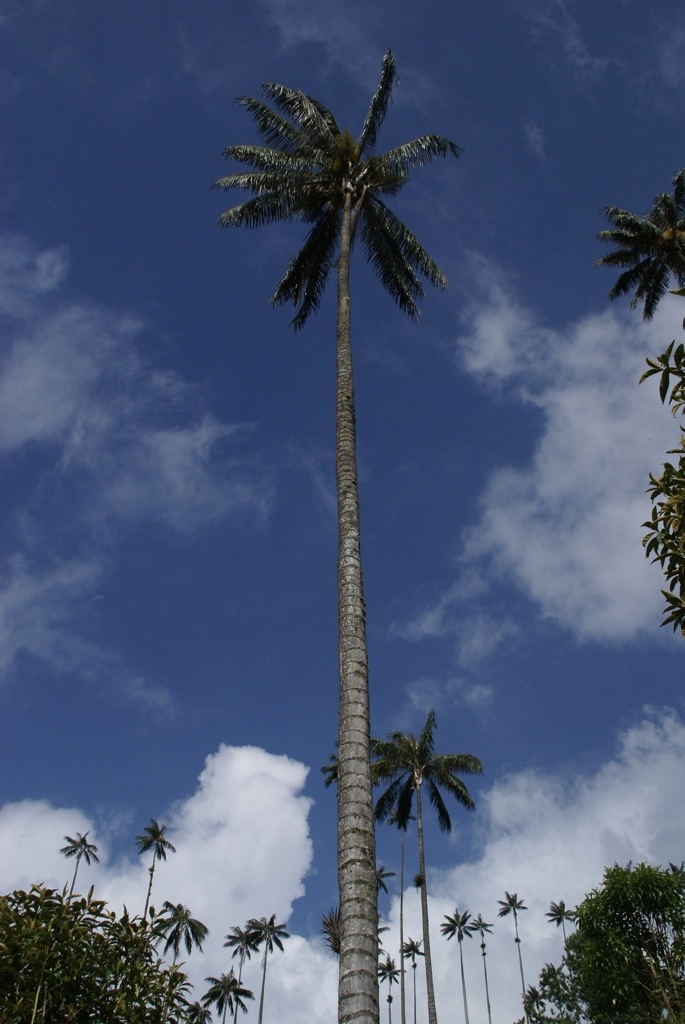
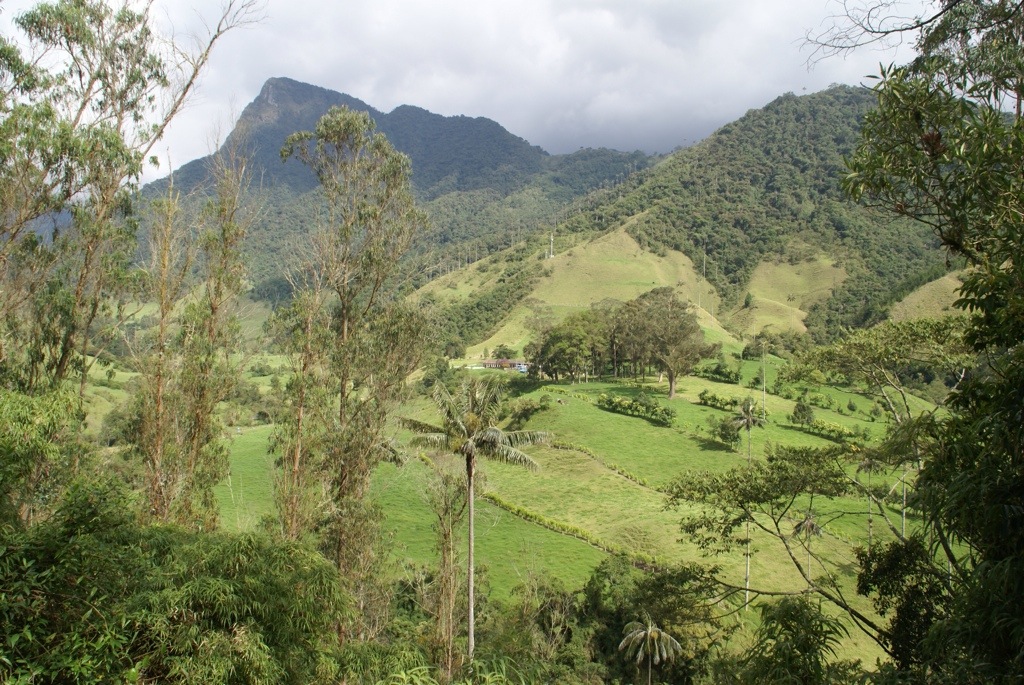
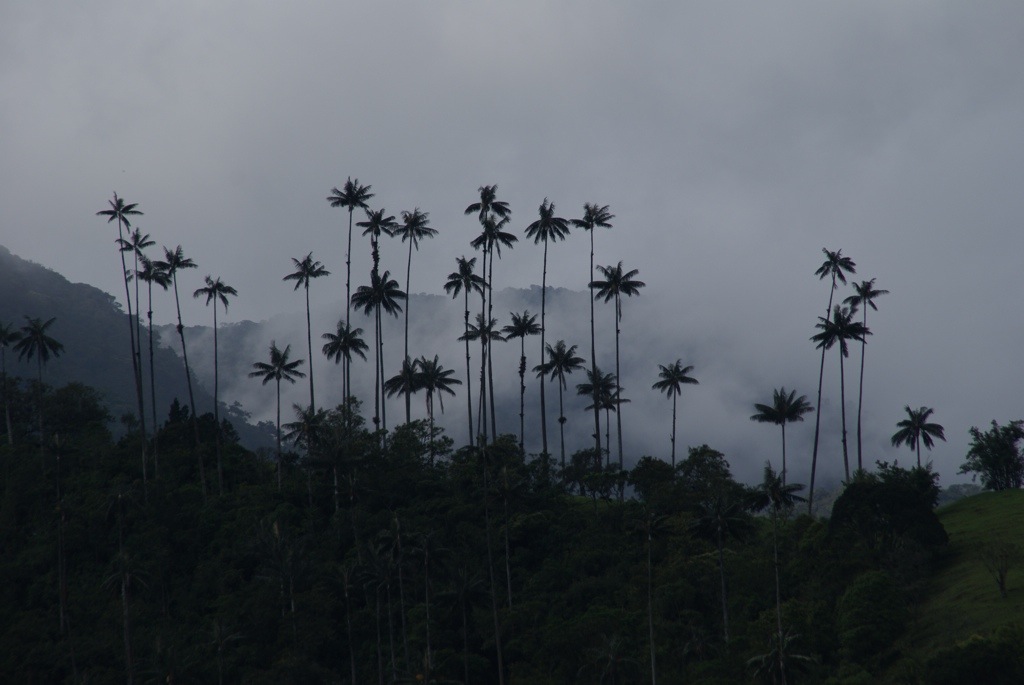 The next morning we headed out for a hike up the valley. The walk followed a bubbling stream and along the way we had to navigate a number of small wooden suspension bridges. These we so bouncy we had to cross one at a time.
The next morning we headed out for a hike up the valley. The walk followed a bubbling stream and along the way we had to navigate a number of small wooden suspension bridges. These we so bouncy we had to cross one at a time.

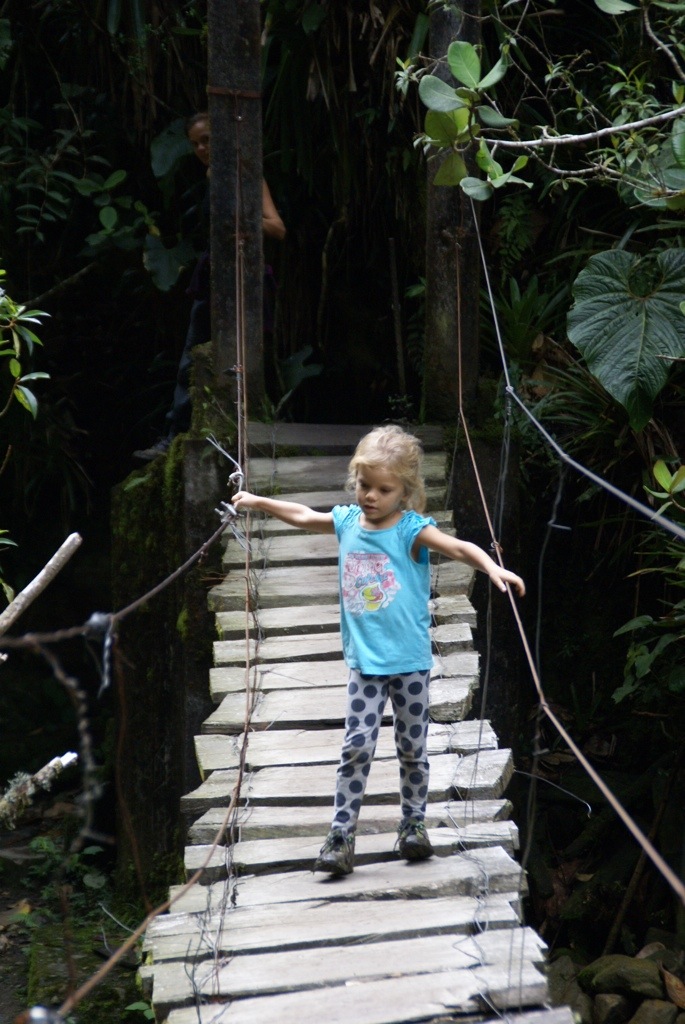
 At the end of the path was a small house set in lovely gardens with lots of hummingbirds.
At the end of the path was a small house set in lovely gardens with lots of hummingbirds.
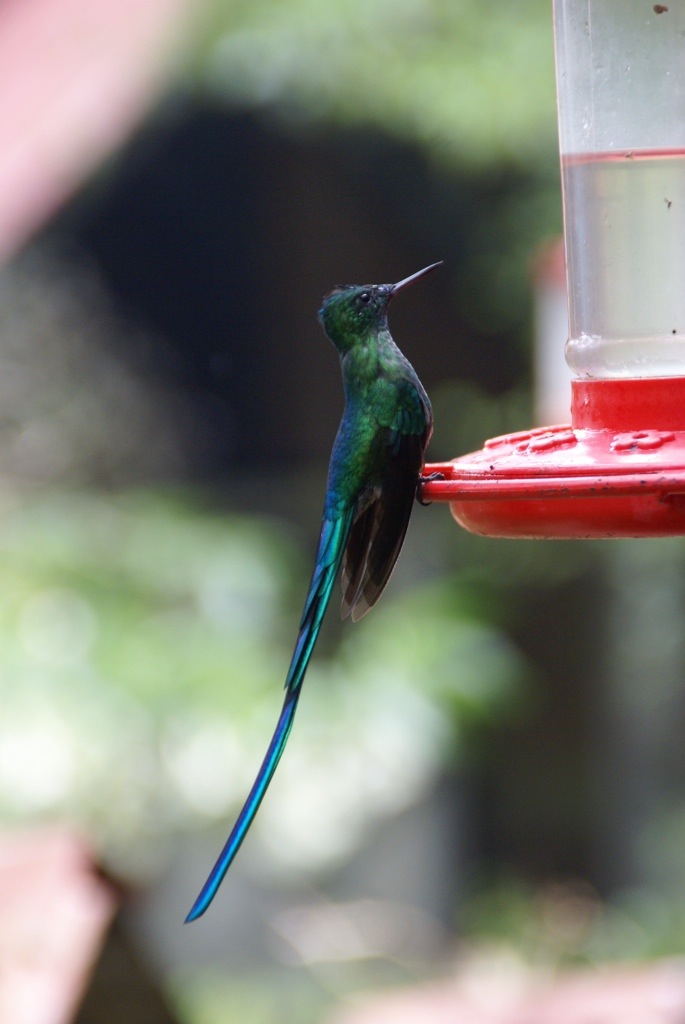
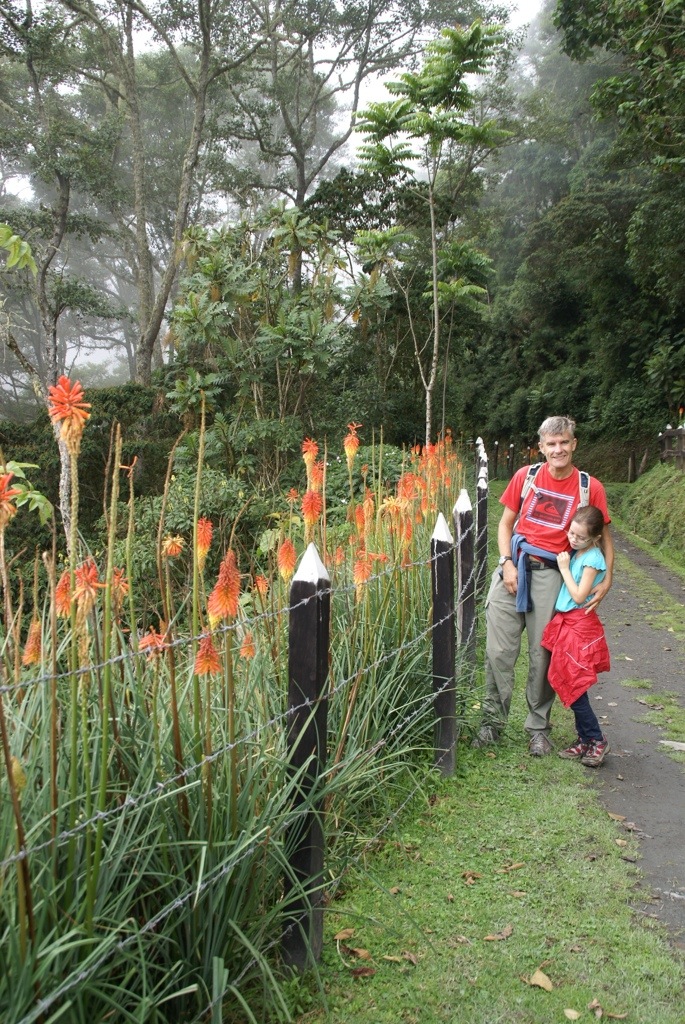 Here they served a traditional Colombian snack of hot chocolate with cheese.
Here they served a traditional Colombian snack of hot chocolate with cheese.
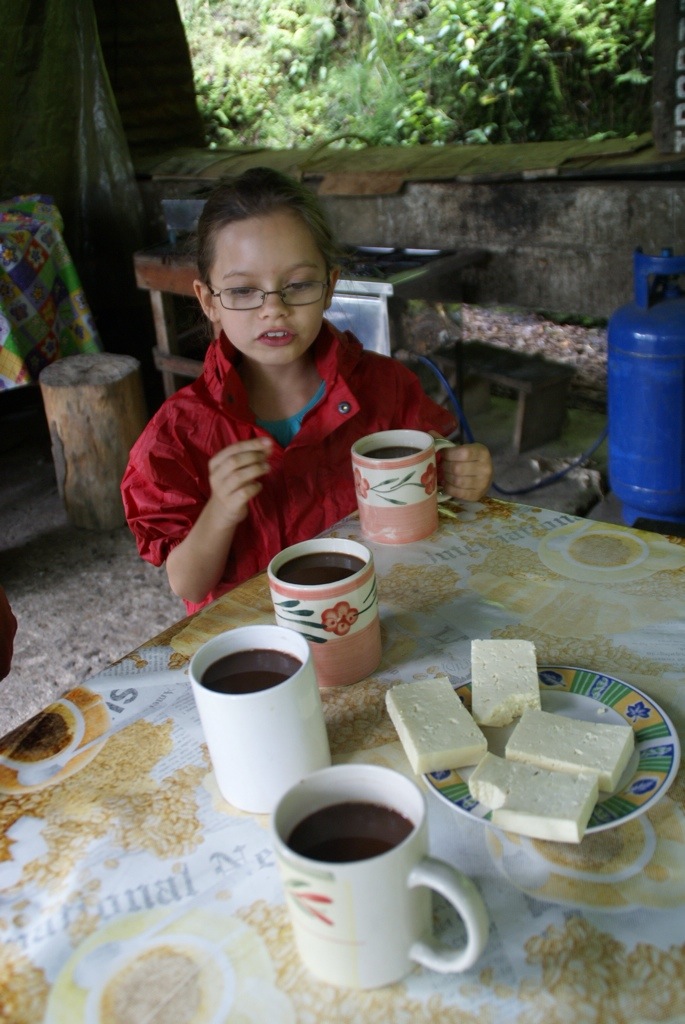 The return hike involved going further up the hill before returning by walking right through the Wax palms. The girls did fantastically, walking 12 km in a morning through quite up and down terrain. This had an added bonus in that they were asleep early that evening.
The return hike involved going further up the hill before returning by walking right through the Wax palms. The girls did fantastically, walking 12 km in a morning through quite up and down terrain. This had an added bonus in that they were asleep early that evening.
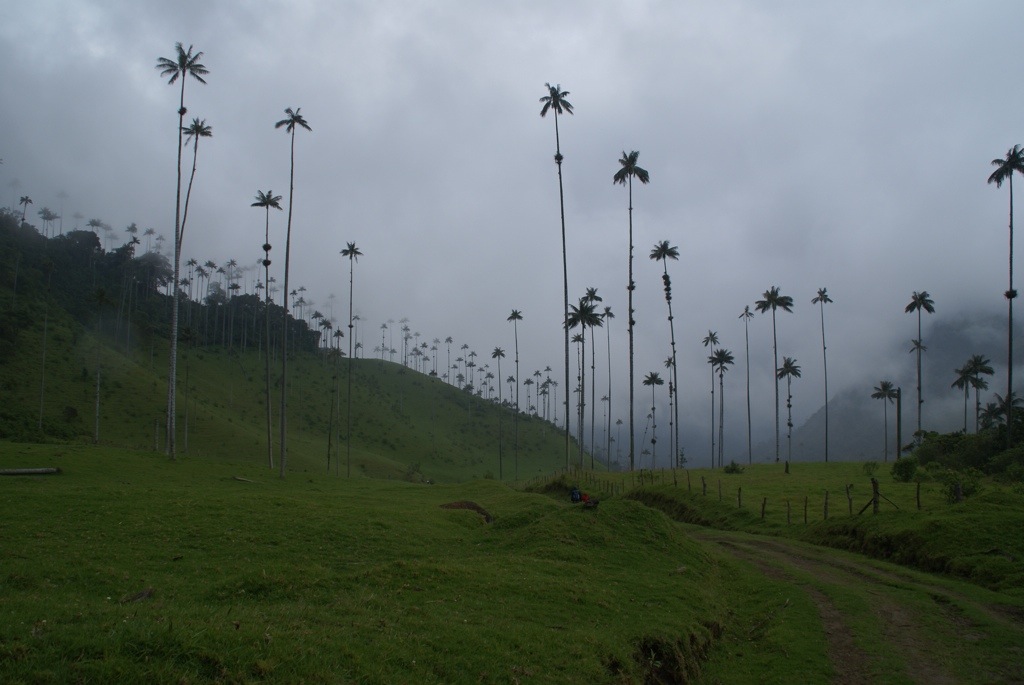 As we knew we had another long drive ahead of us we decided to get started that afternoon. This meant going back over the mountains with all the other trucks. When I did manage to overtake a truck on a downhill section I was pulled over by the police for crossing a yellow line. After not understanding what he was saying and 10 minutes of back and forth with various documents he decided it was easier to just let me go.
As it was getting dark we decided to call it a day and pulled in to park at a petrol station for the night.
As we knew we had another long drive ahead of us we decided to get started that afternoon. This meant going back over the mountains with all the other trucks. When I did manage to overtake a truck on a downhill section I was pulled over by the police for crossing a yellow line. After not understanding what he was saying and 10 minutes of back and forth with various documents he decided it was easier to just let me go.
As it was getting dark we decided to call it a day and pulled in to park at a petrol station for the night. 































